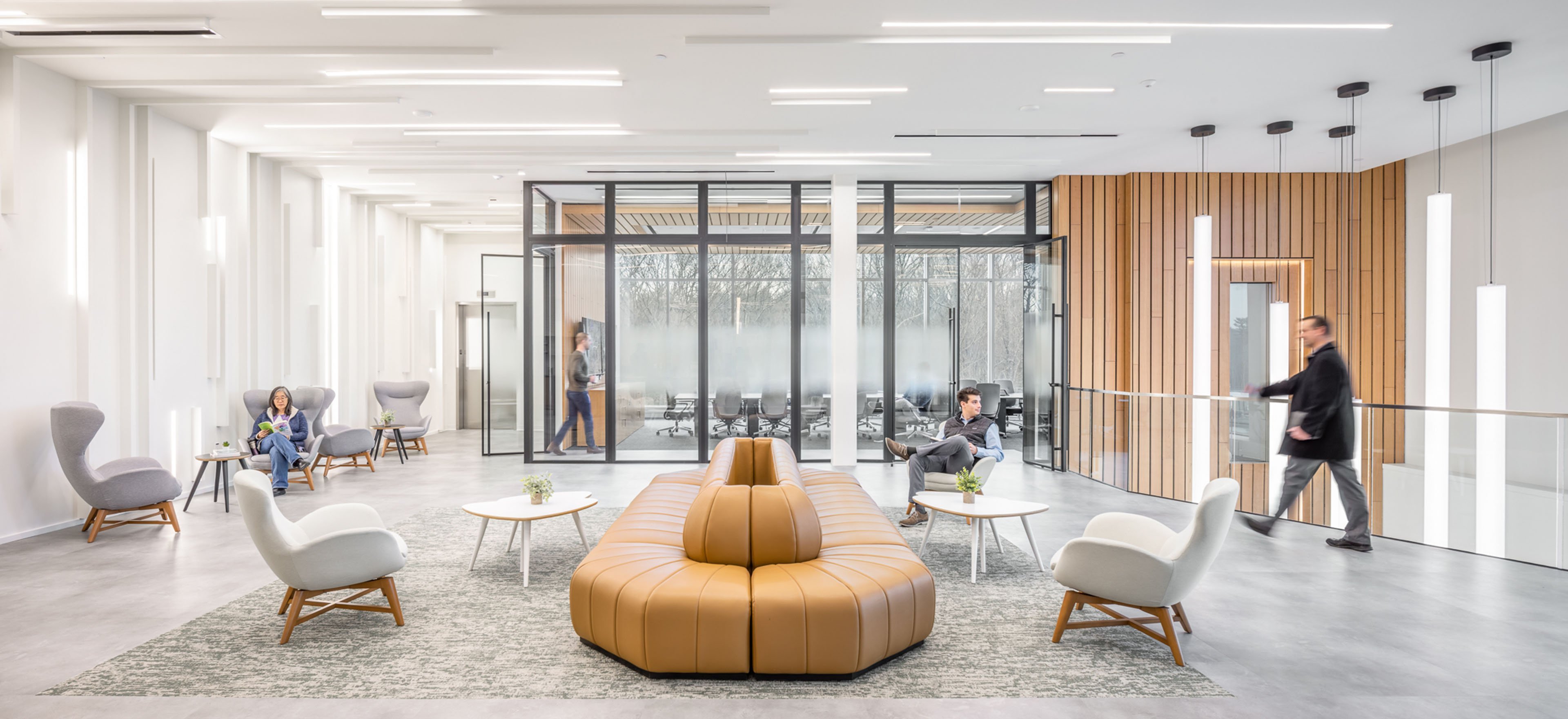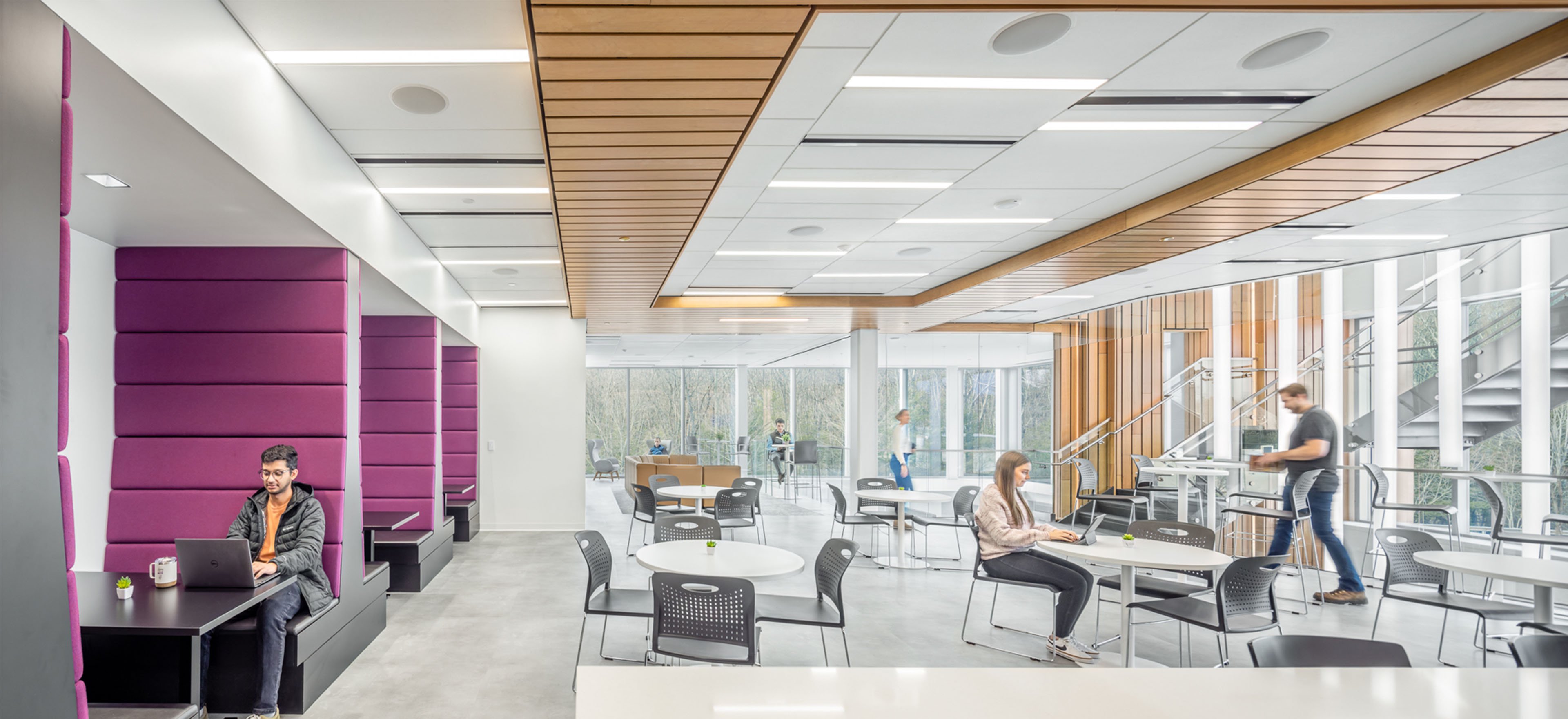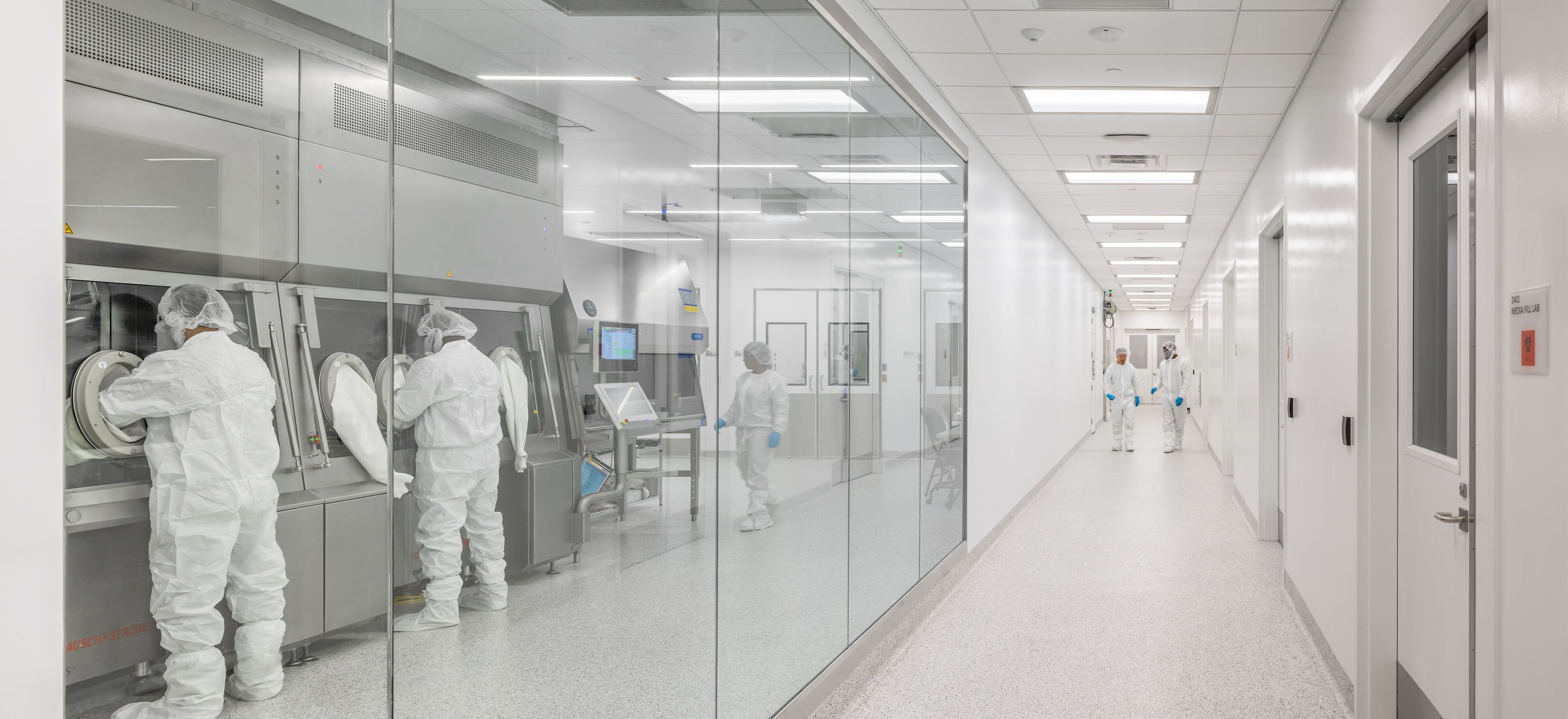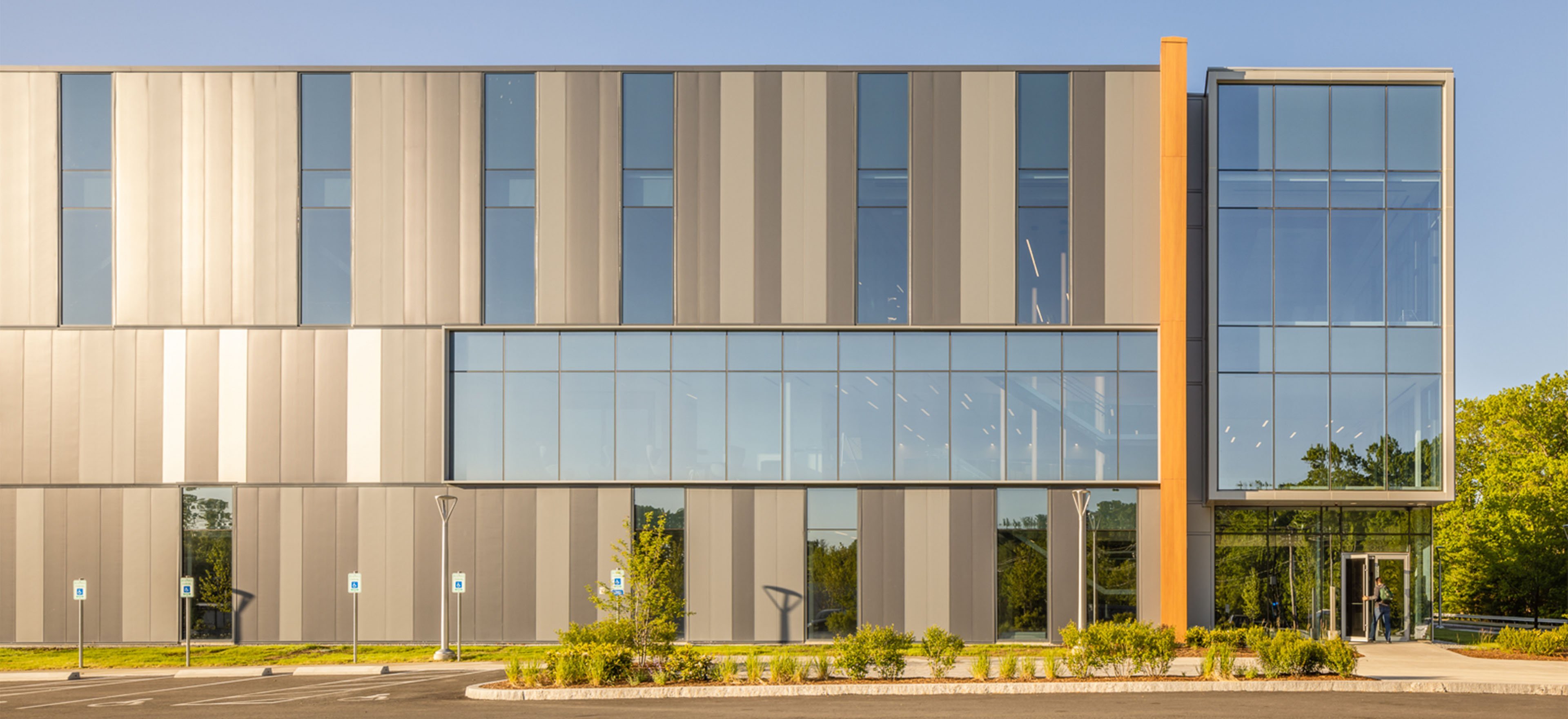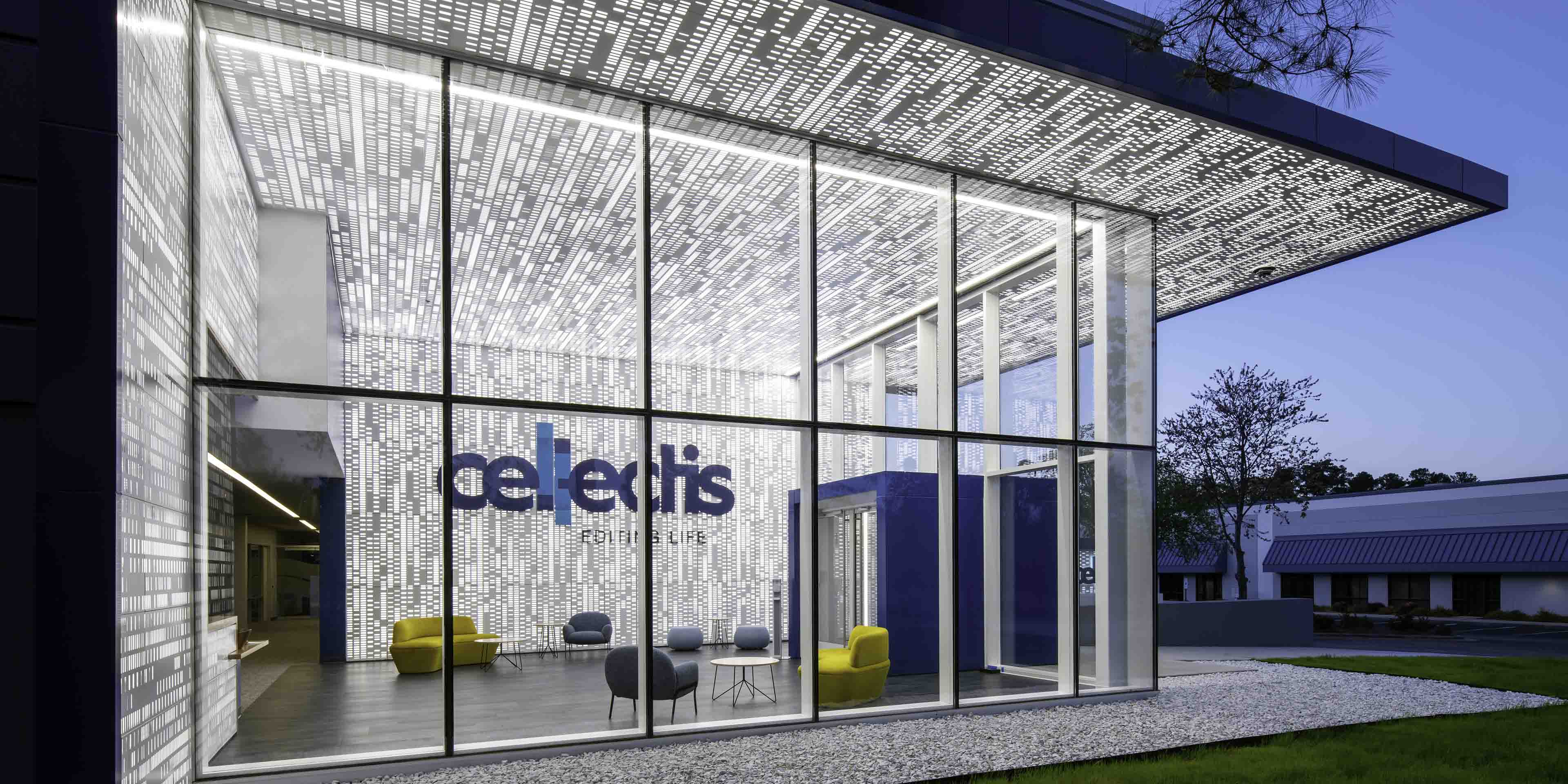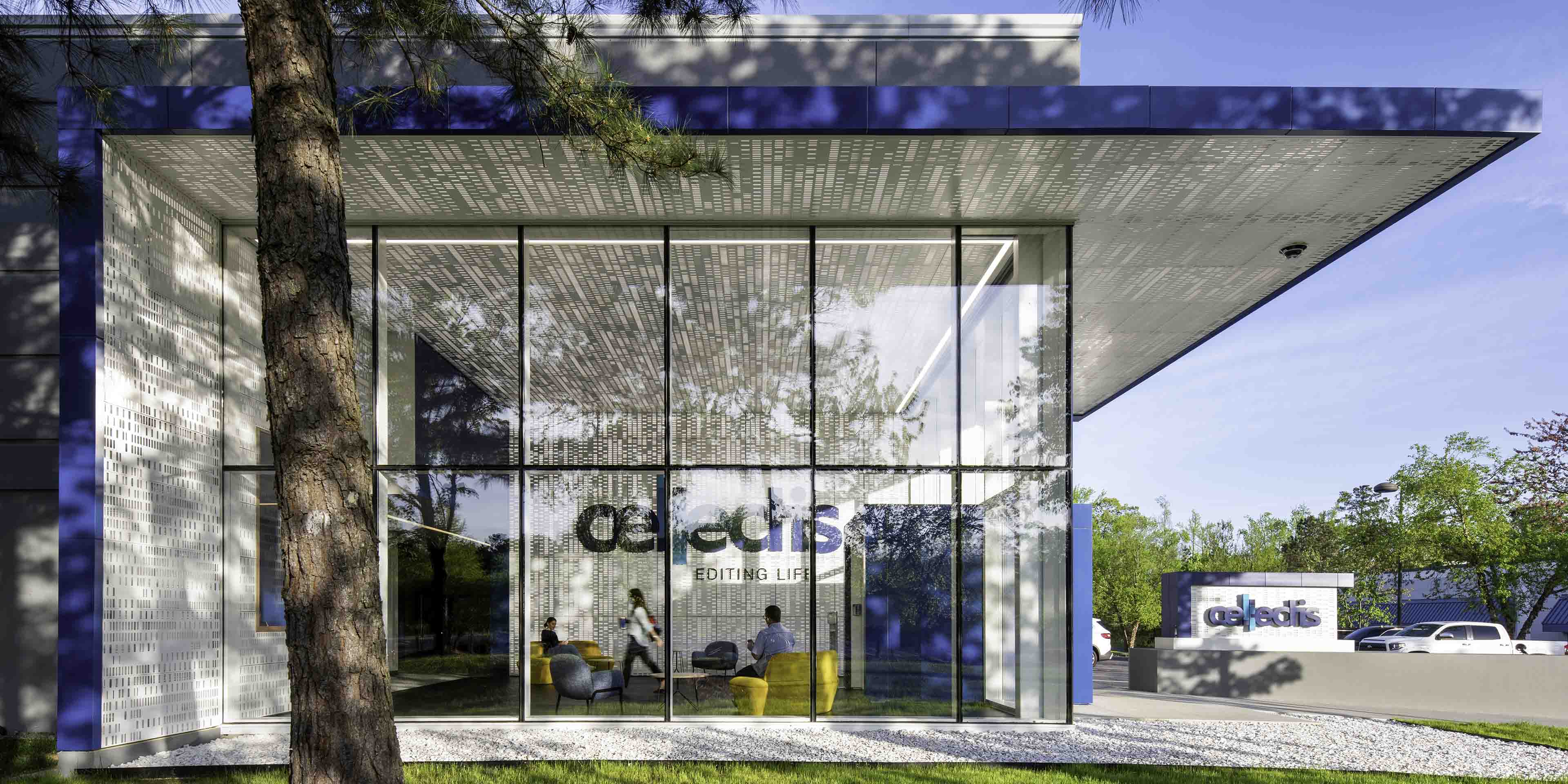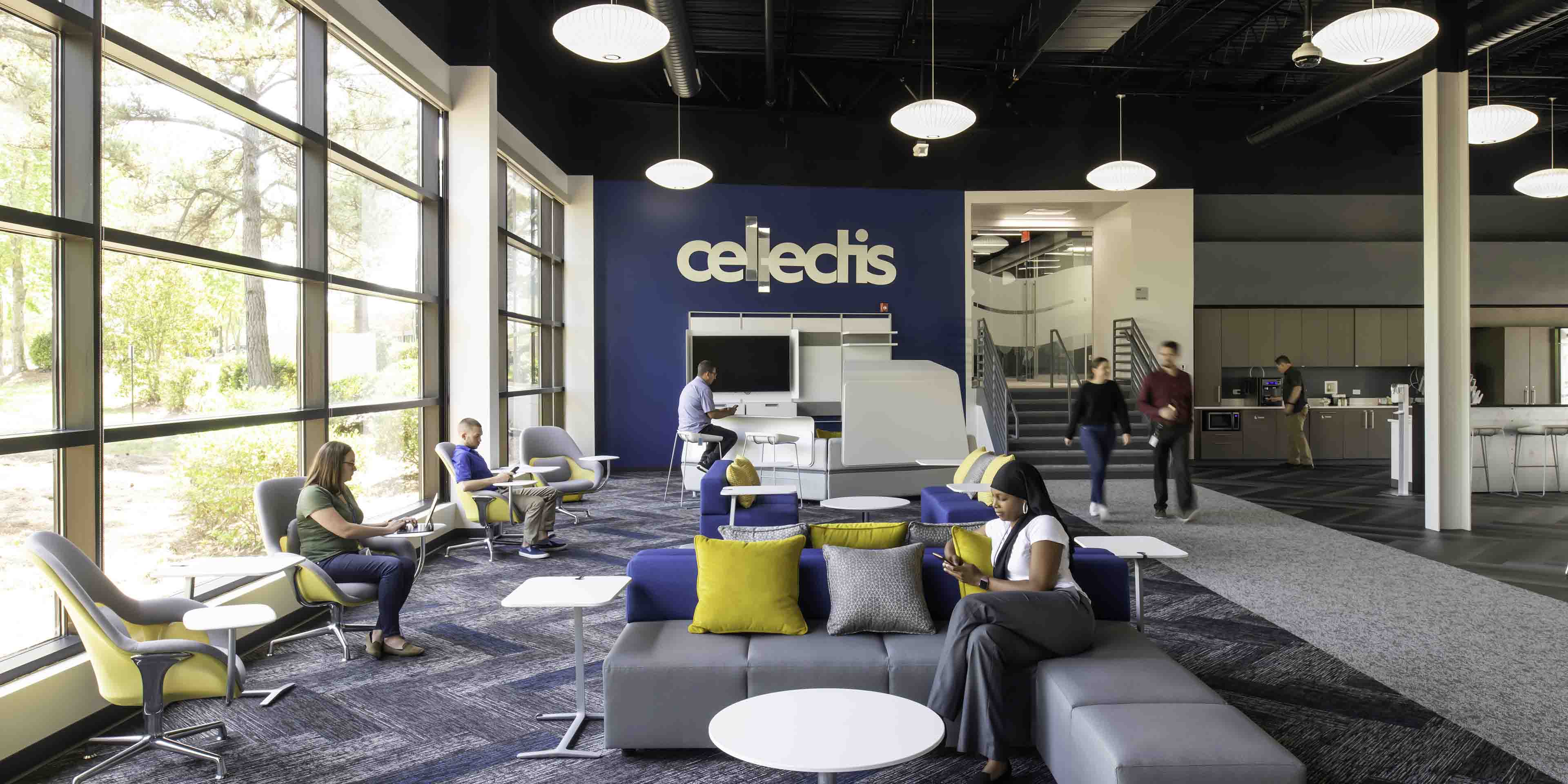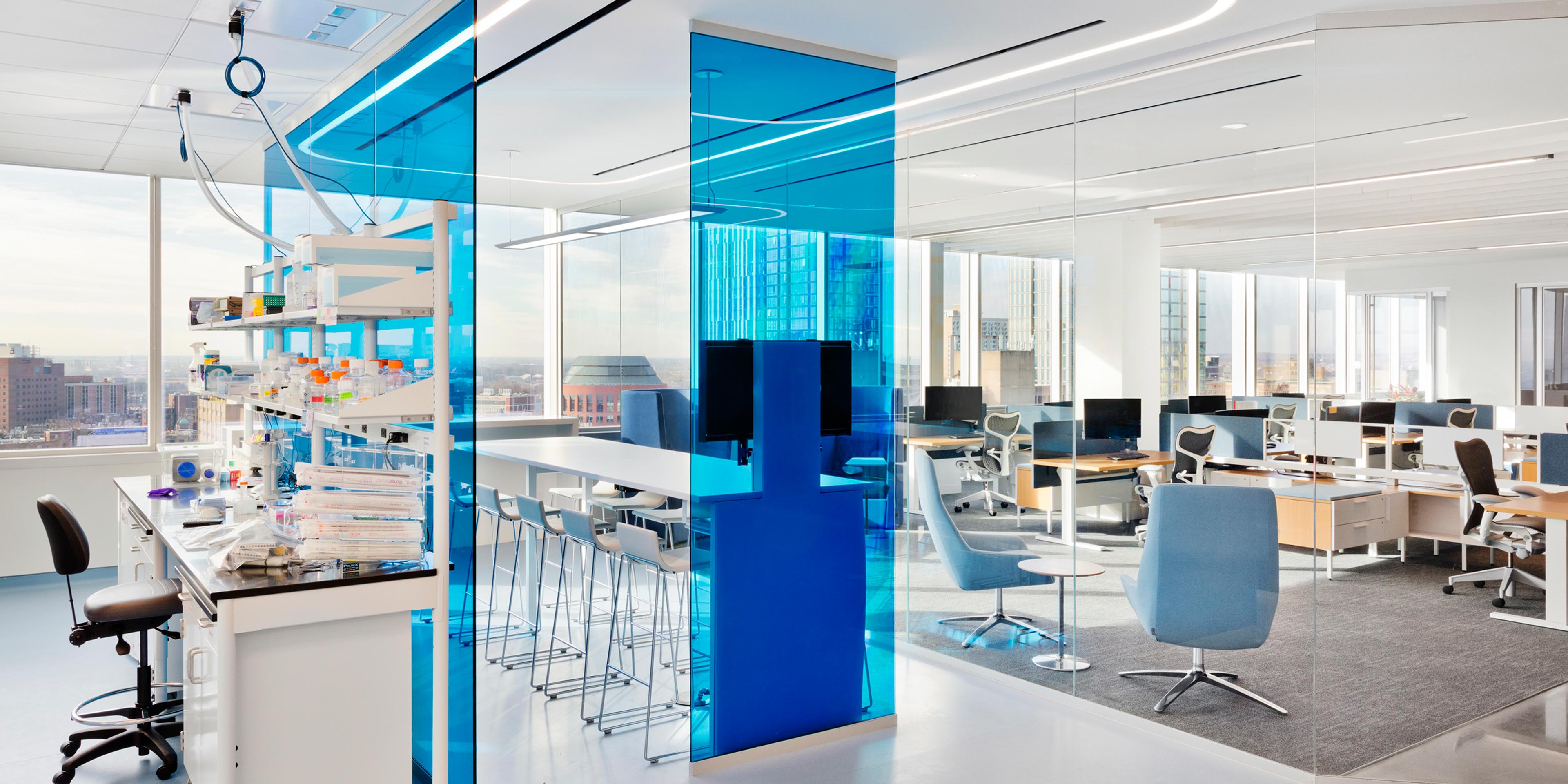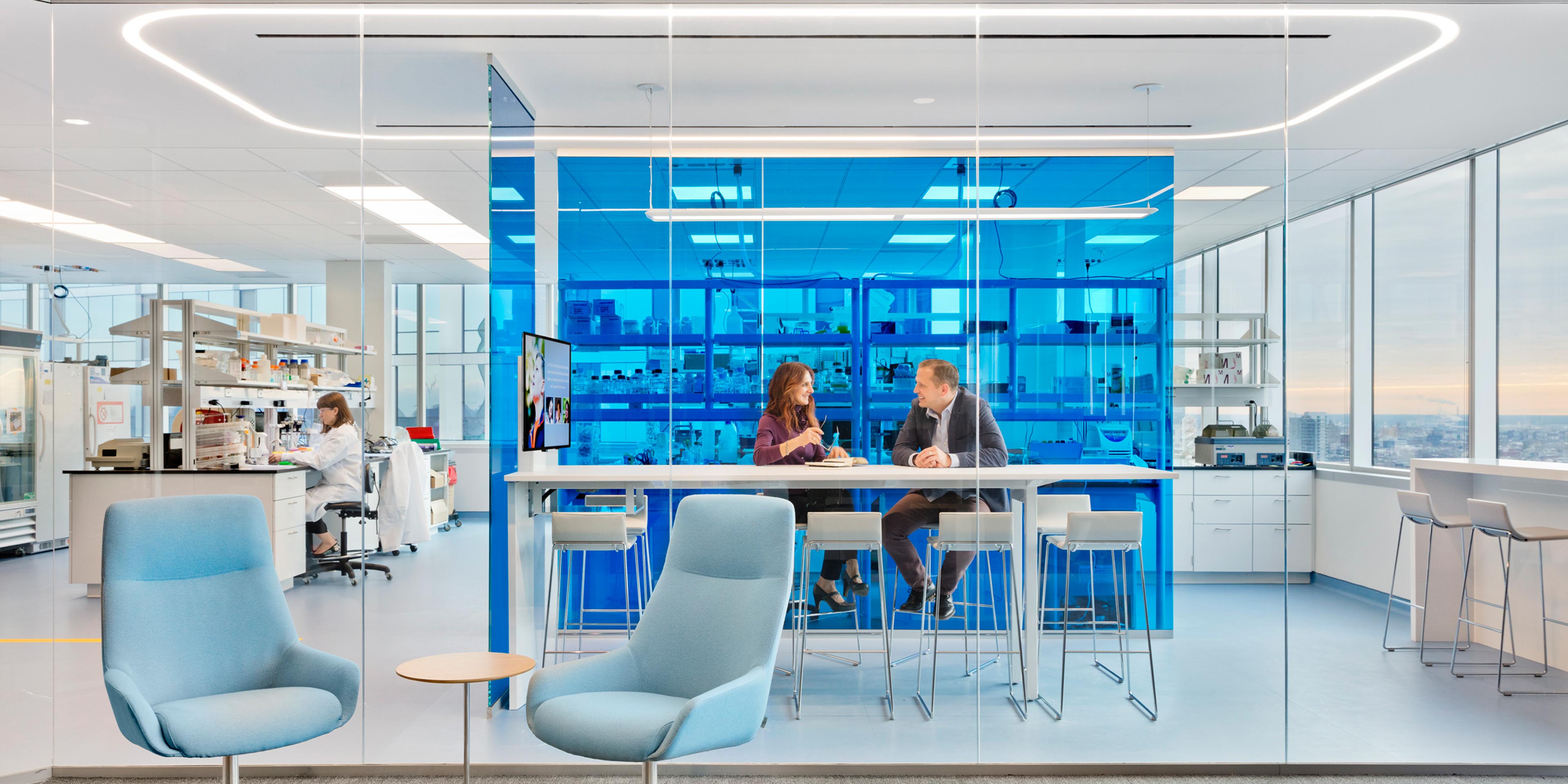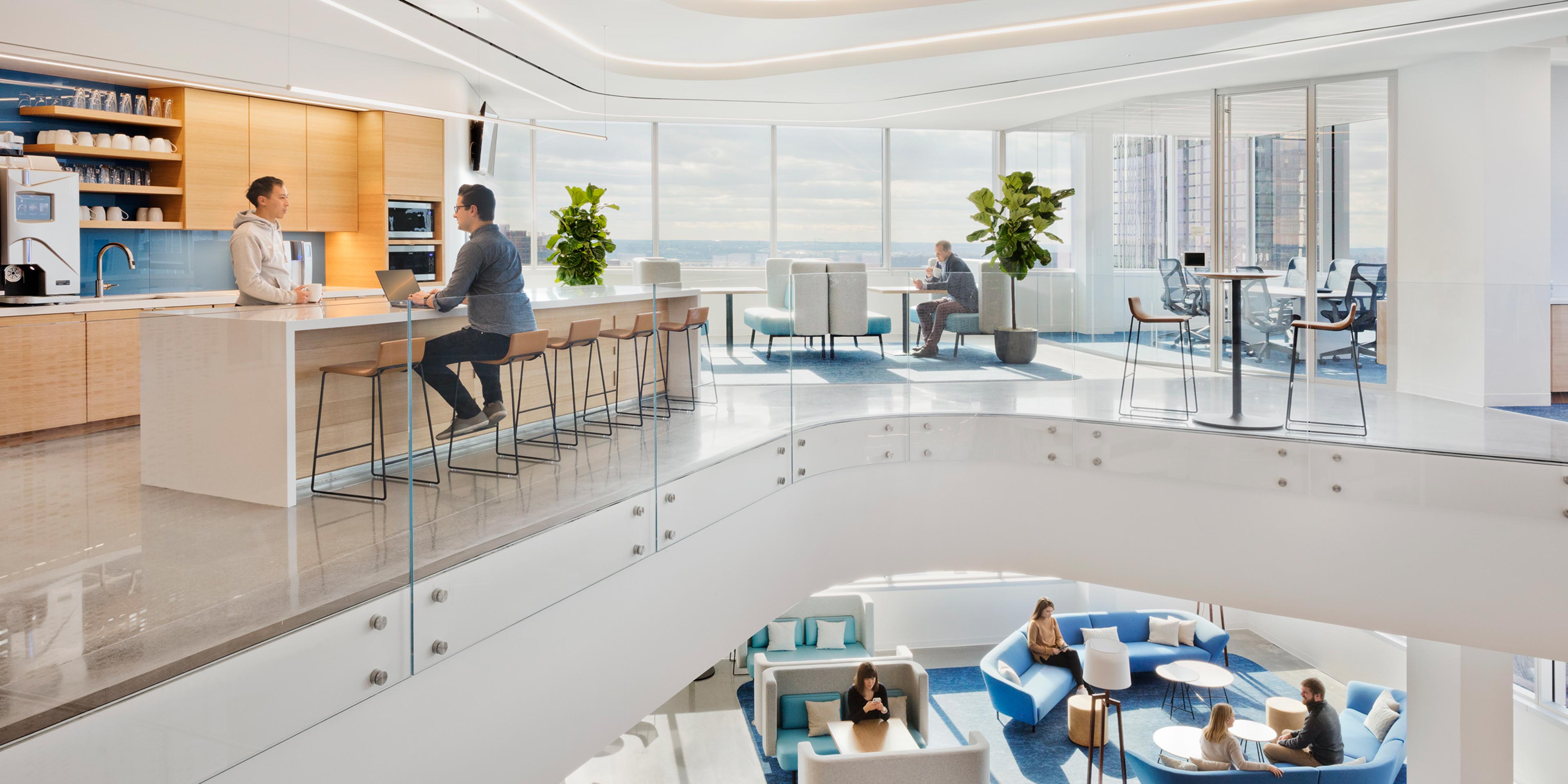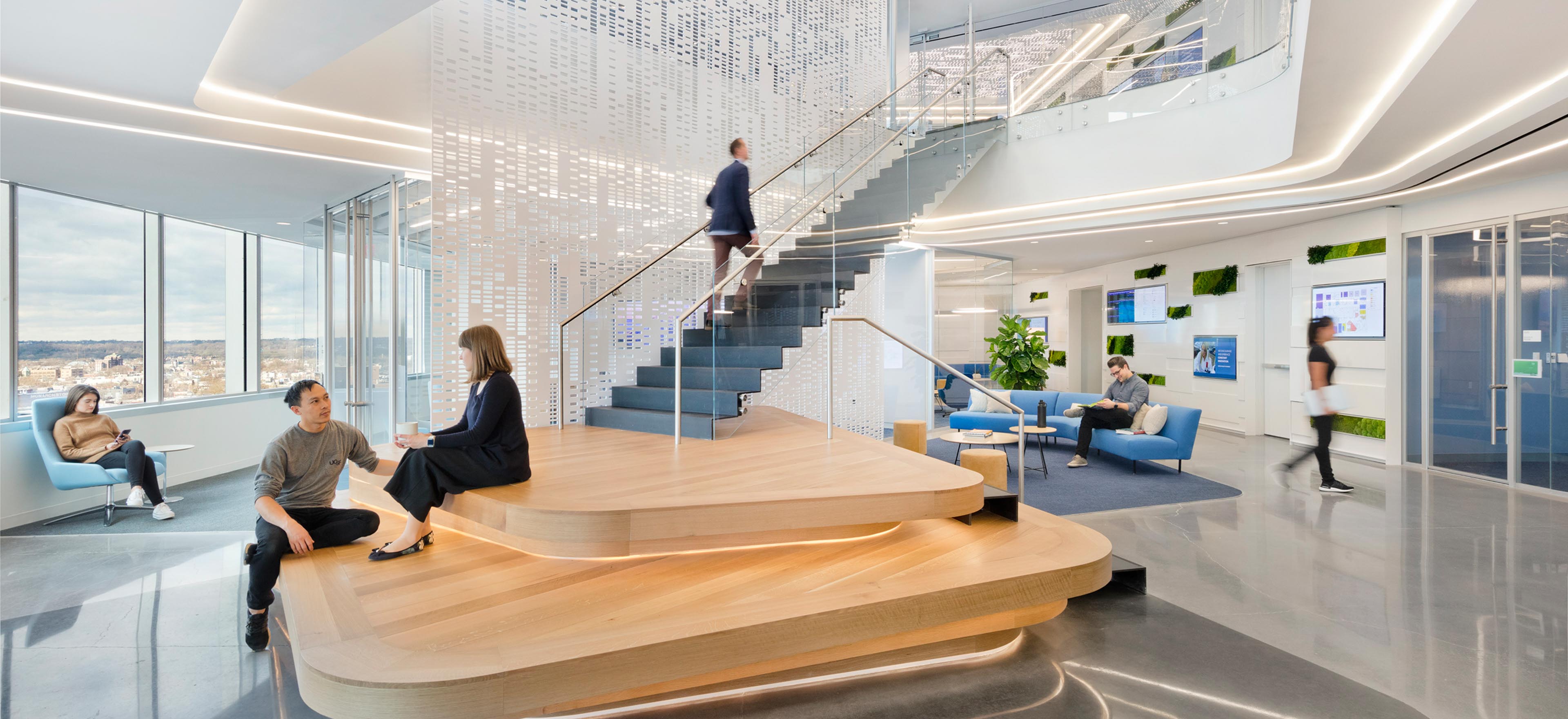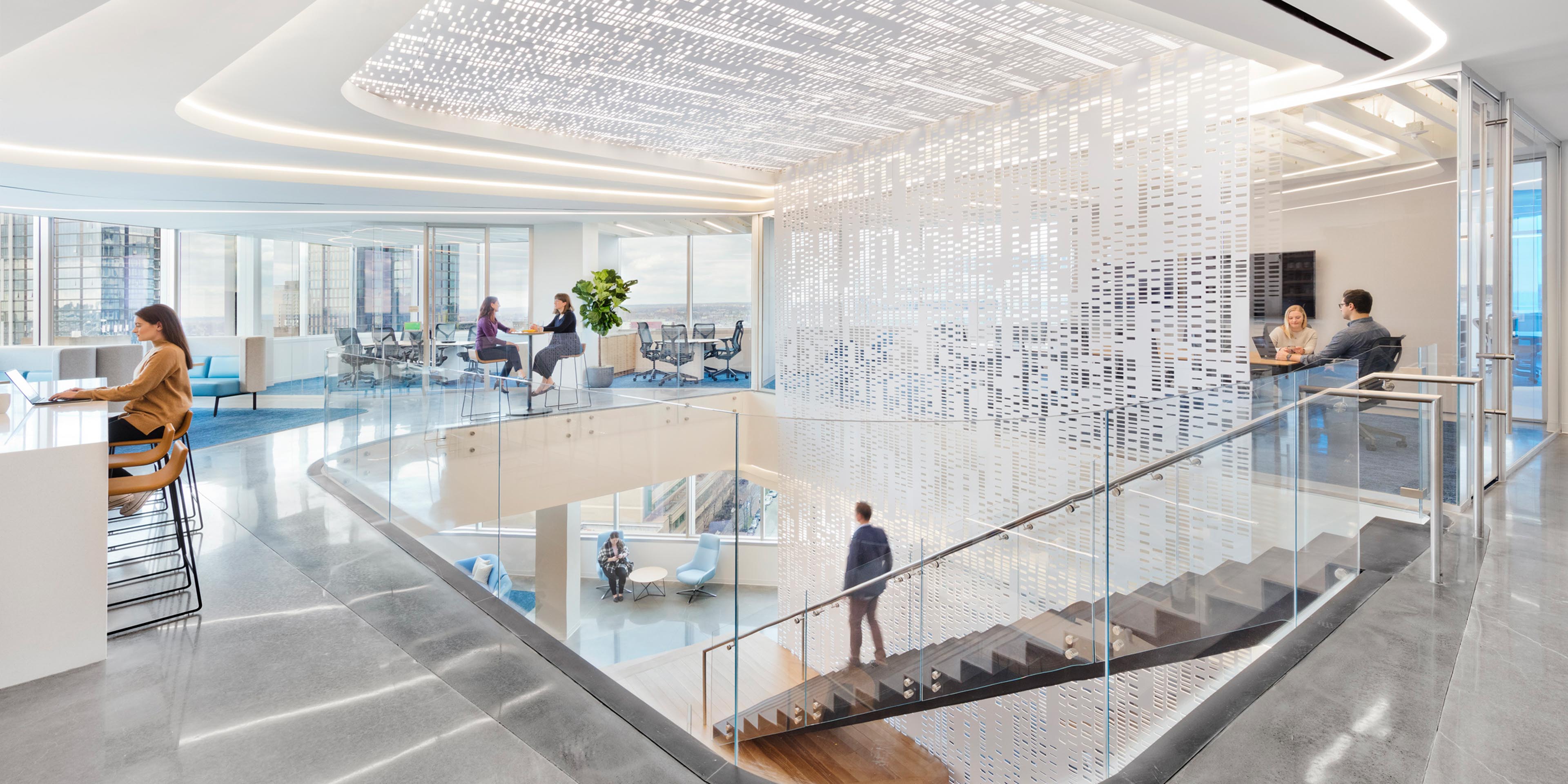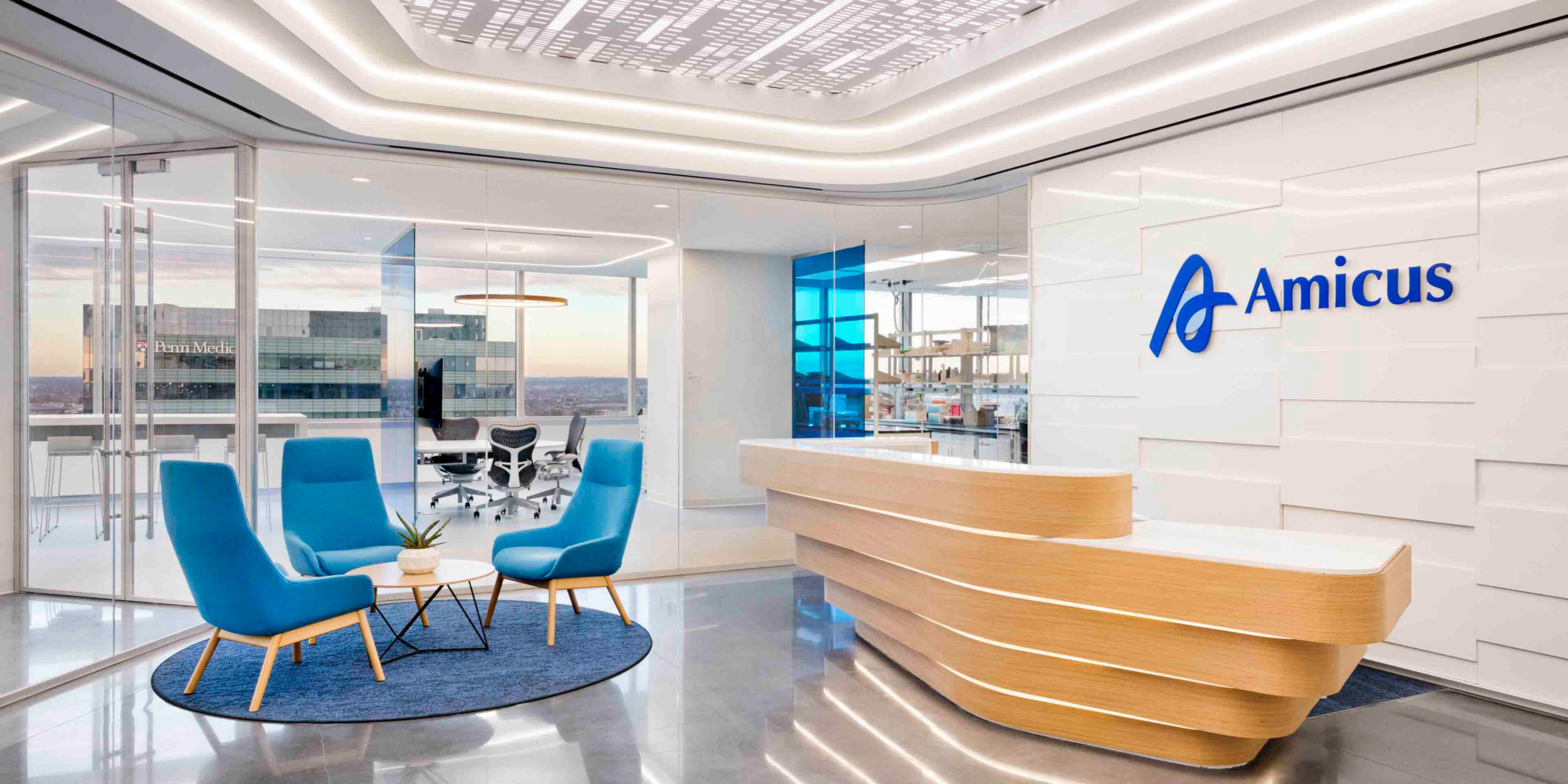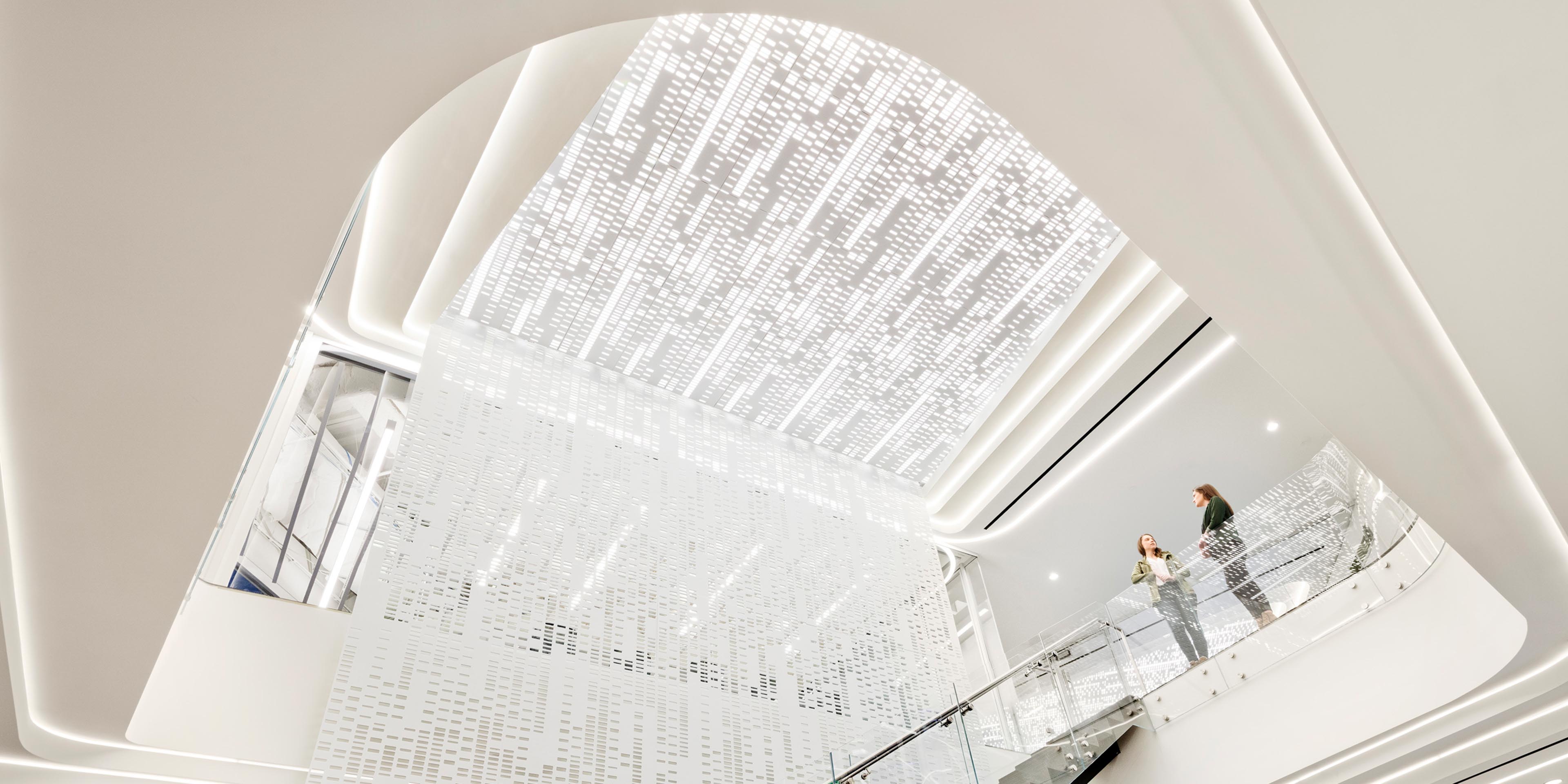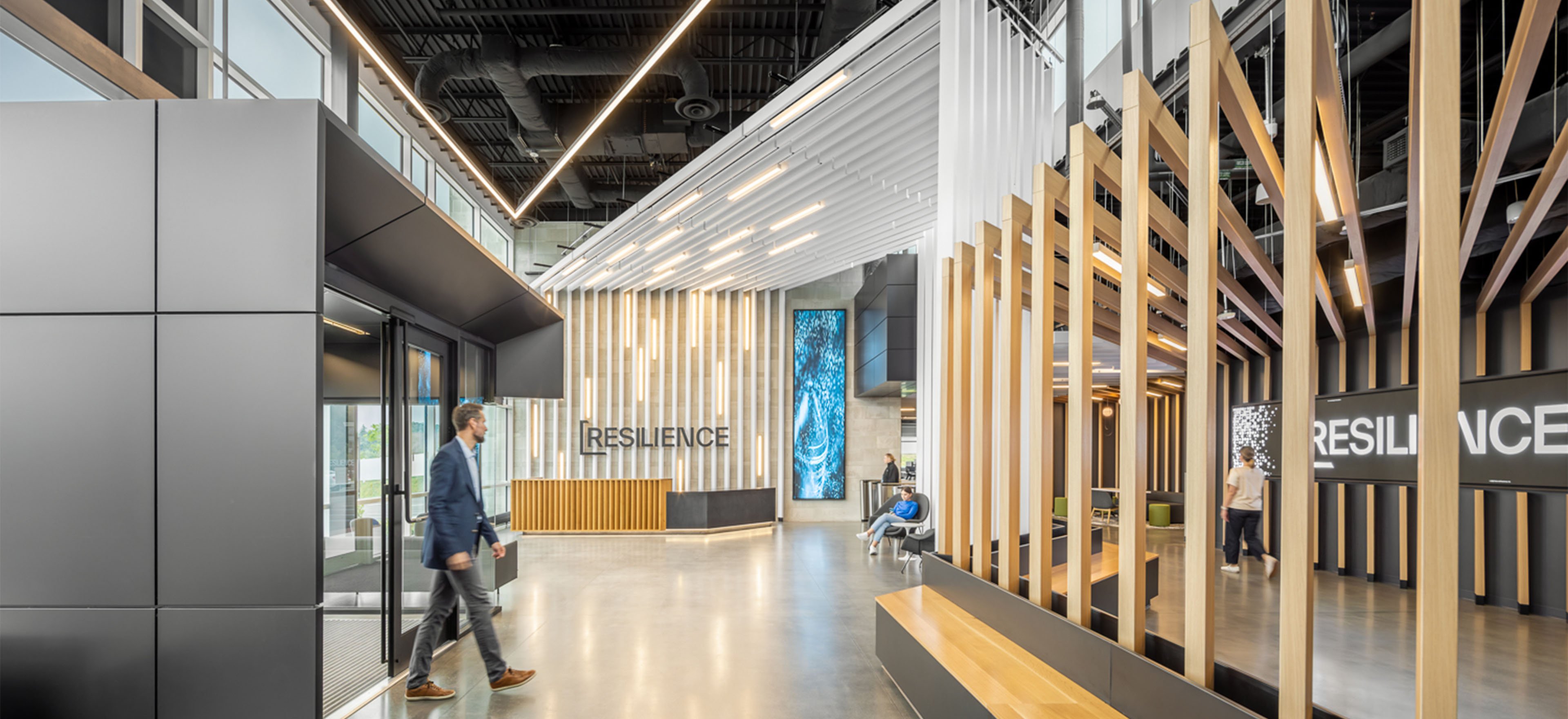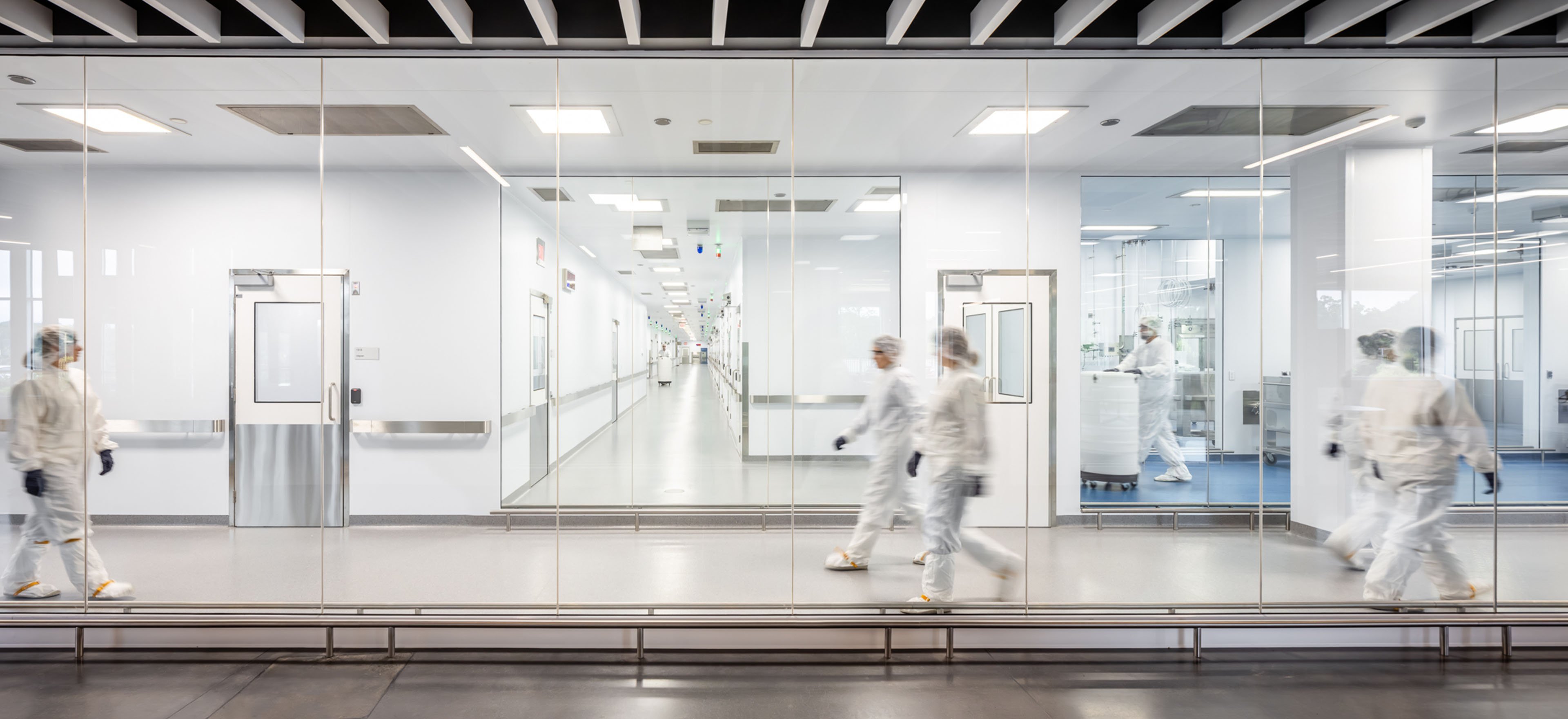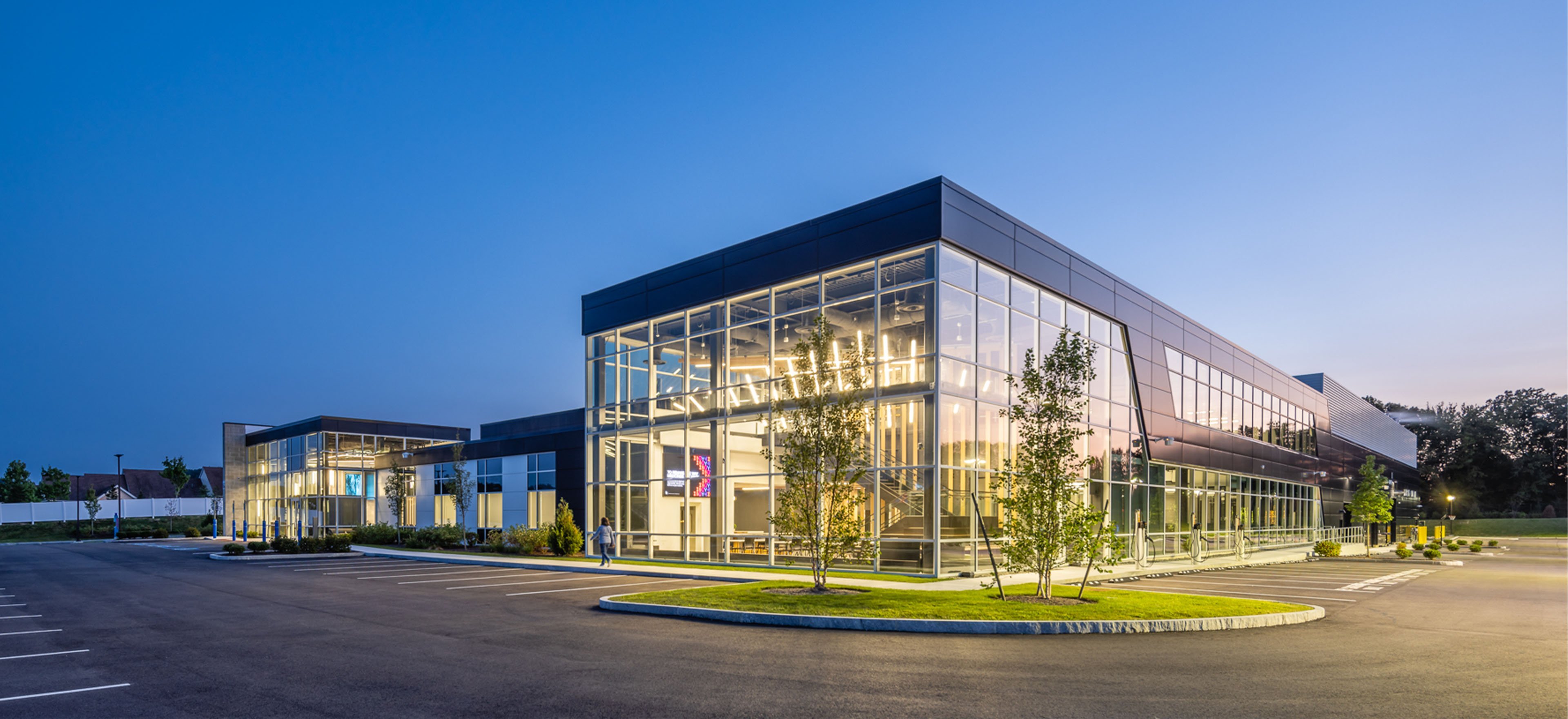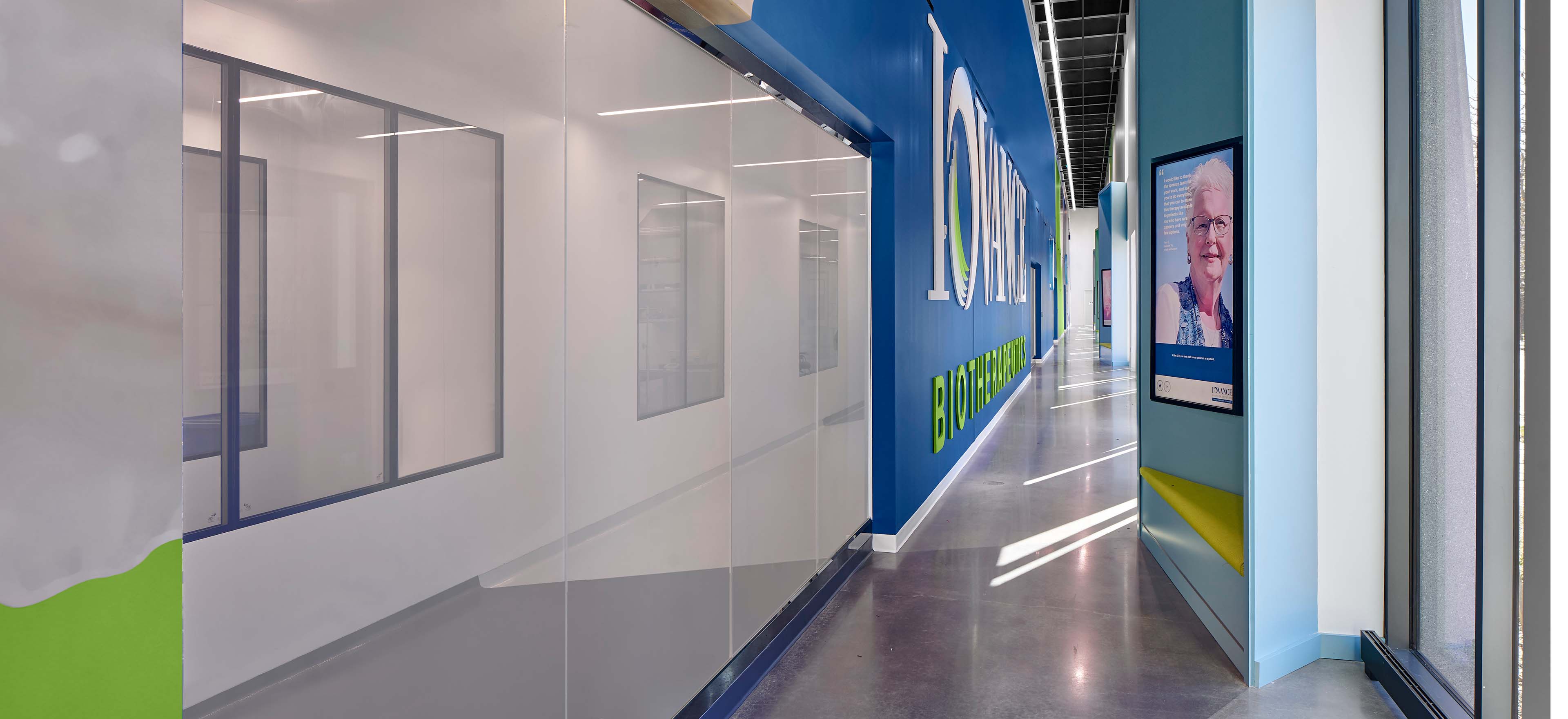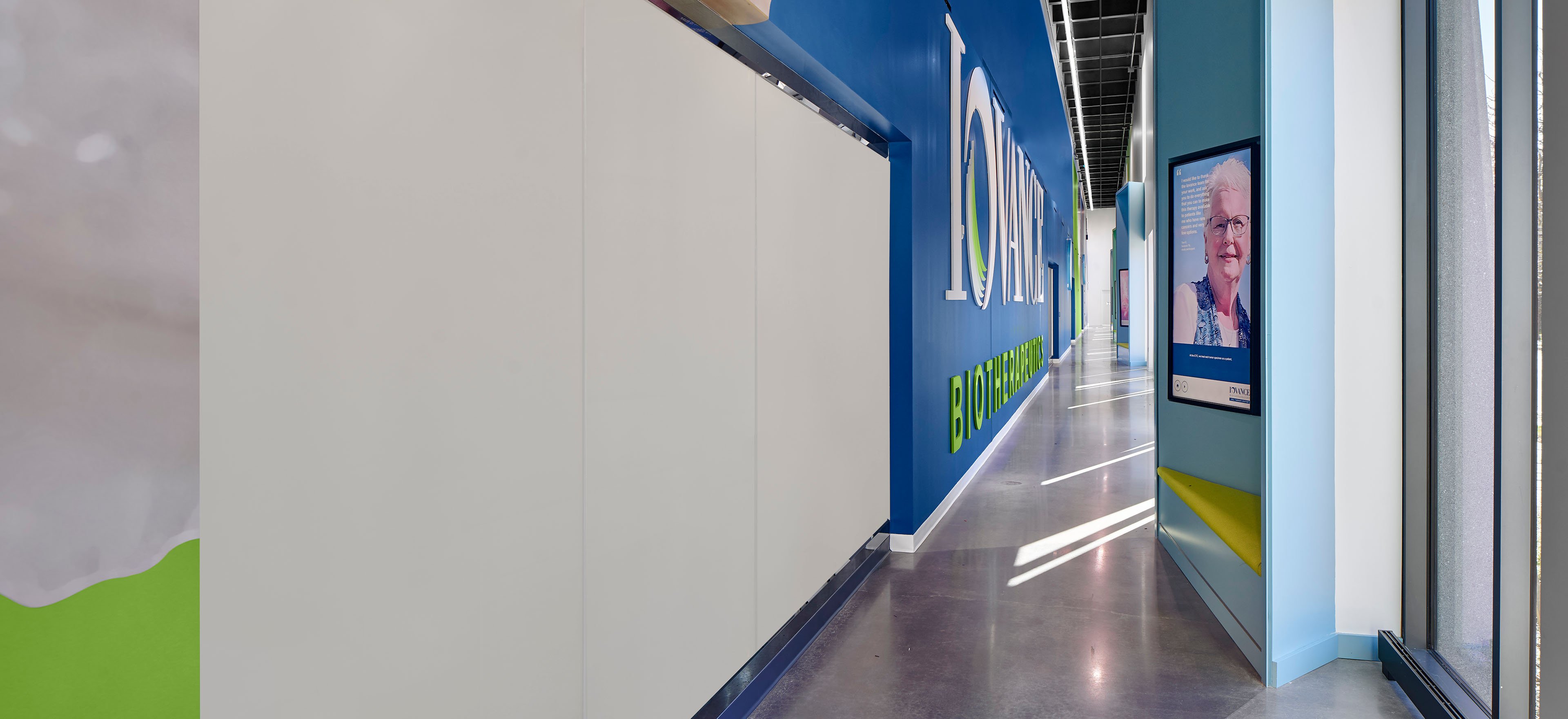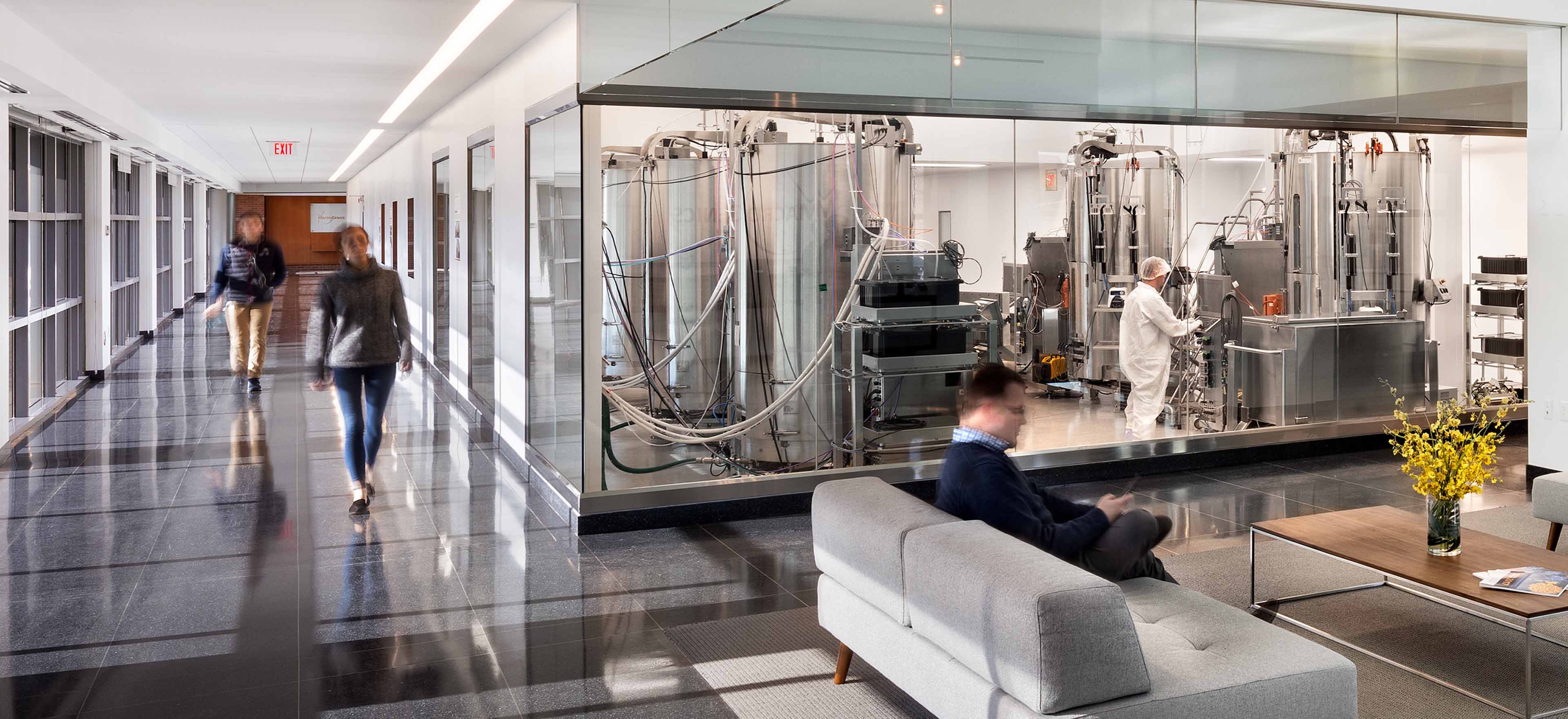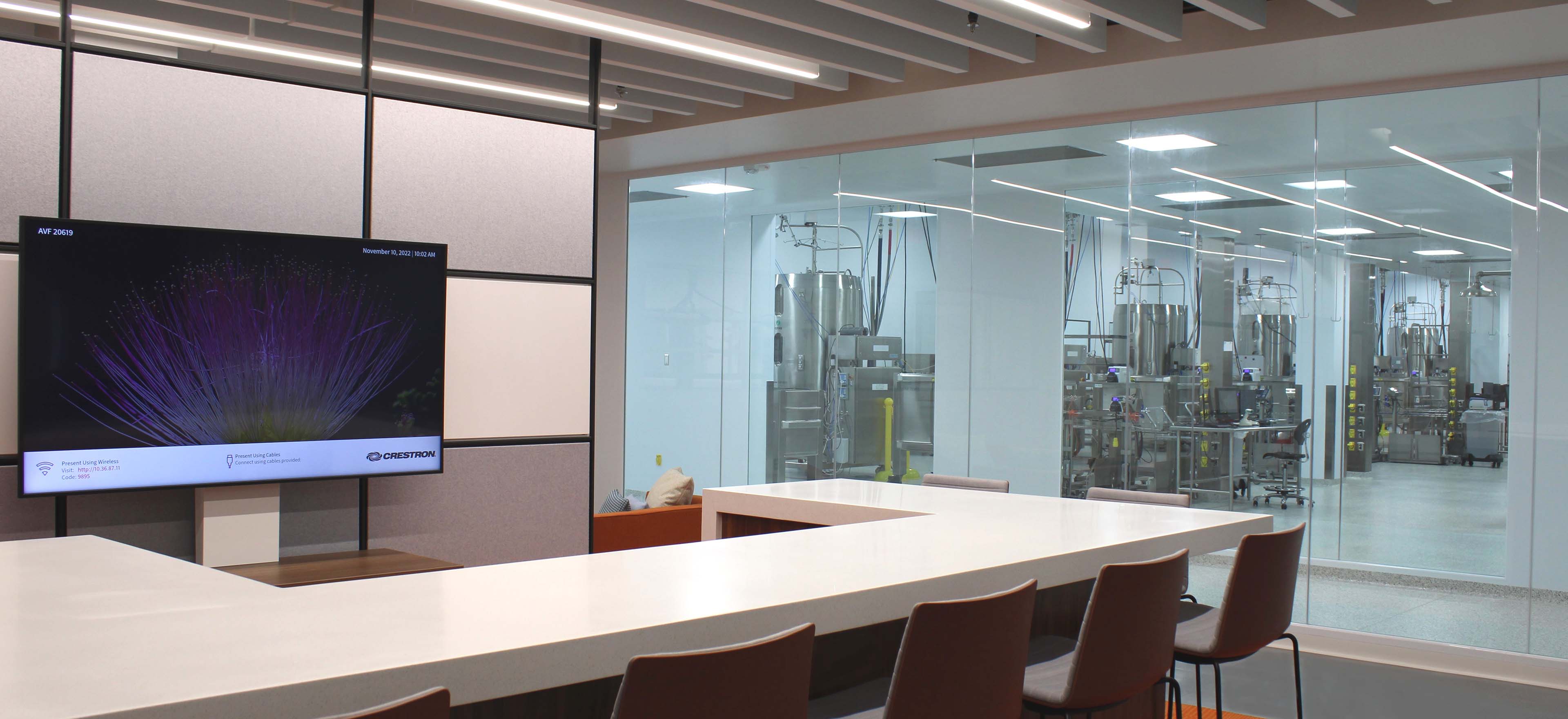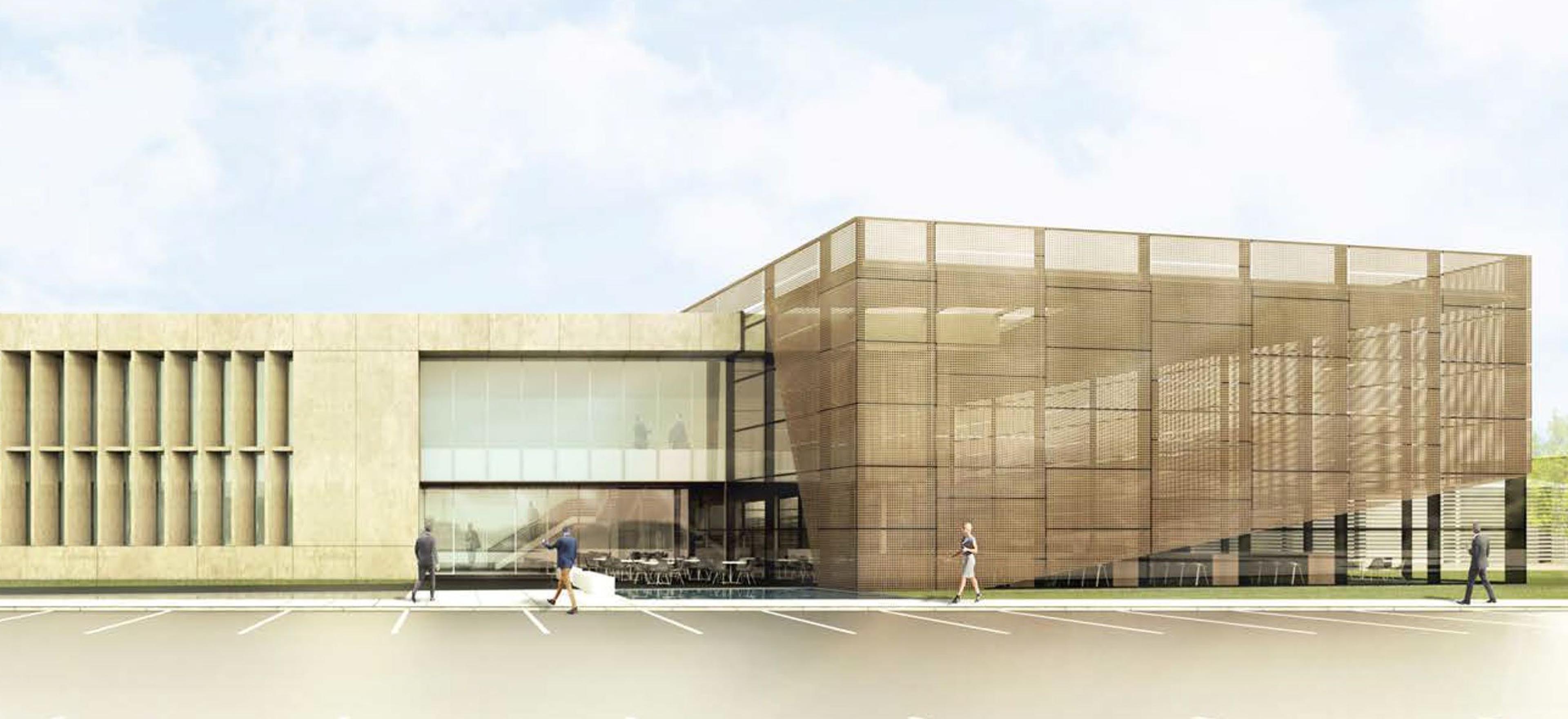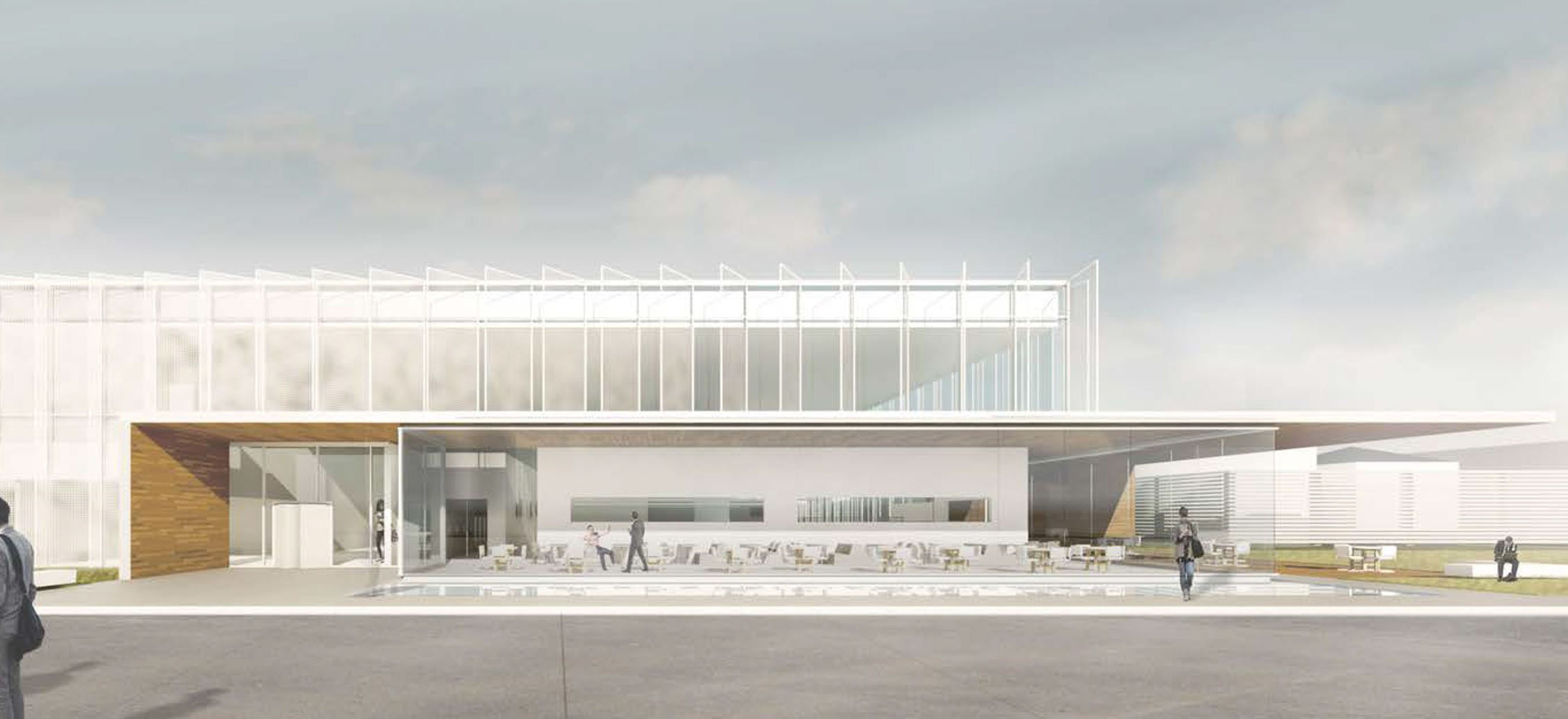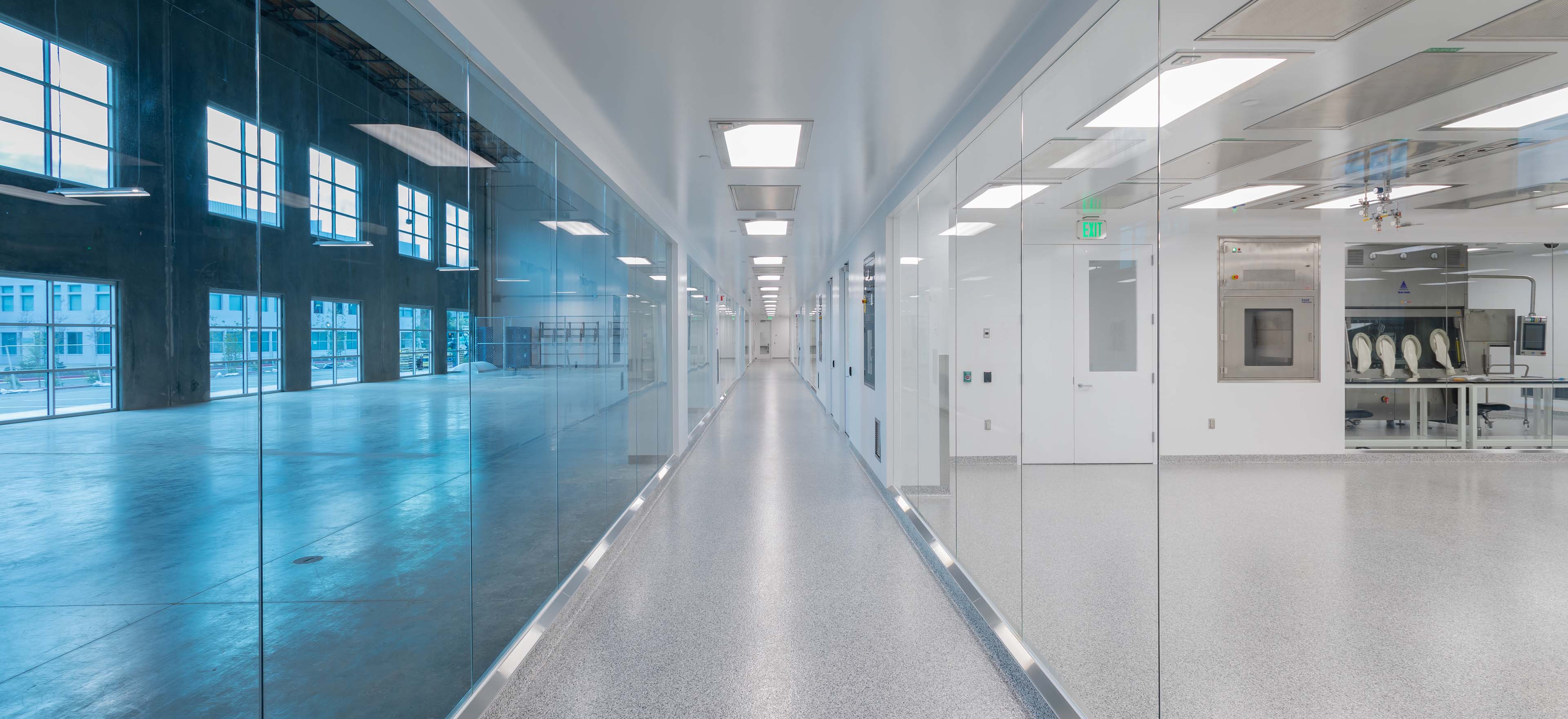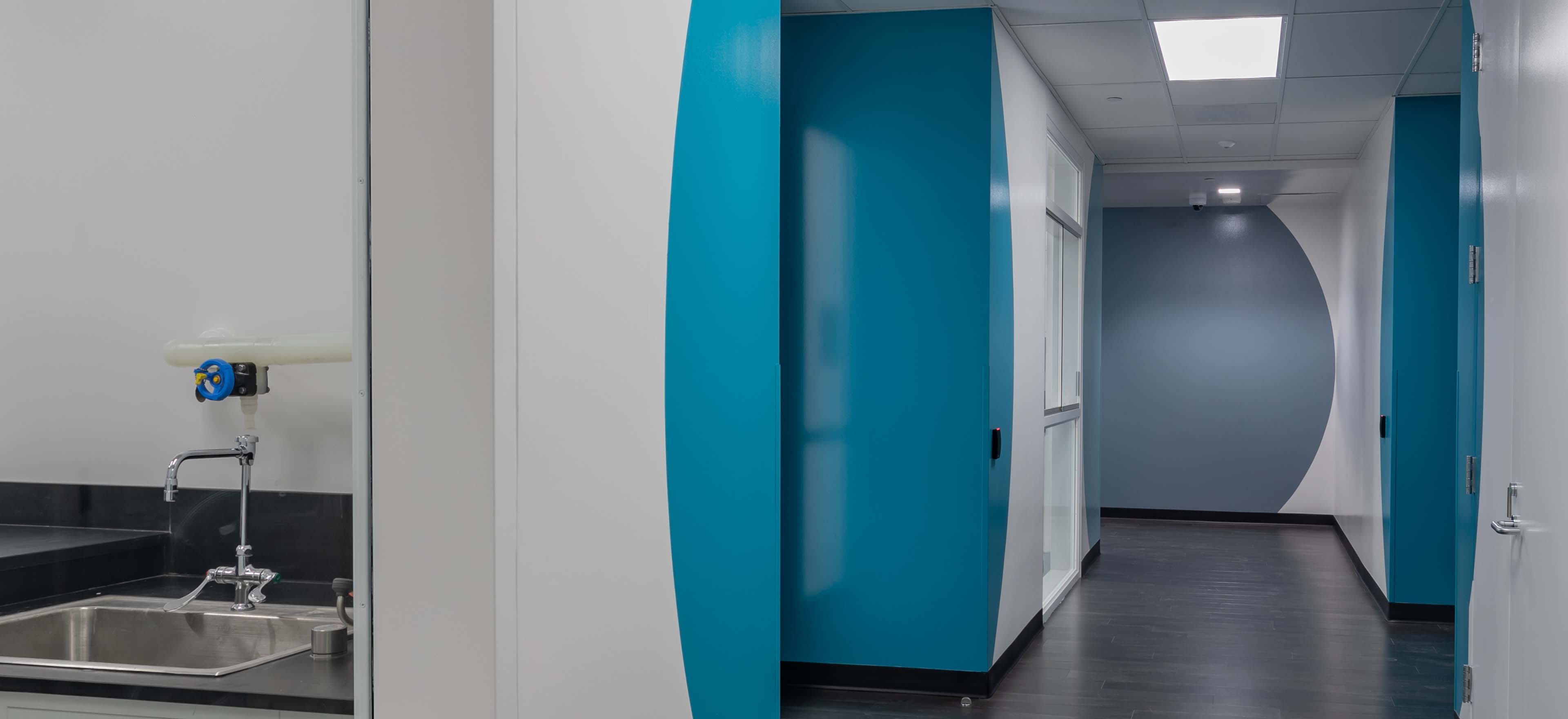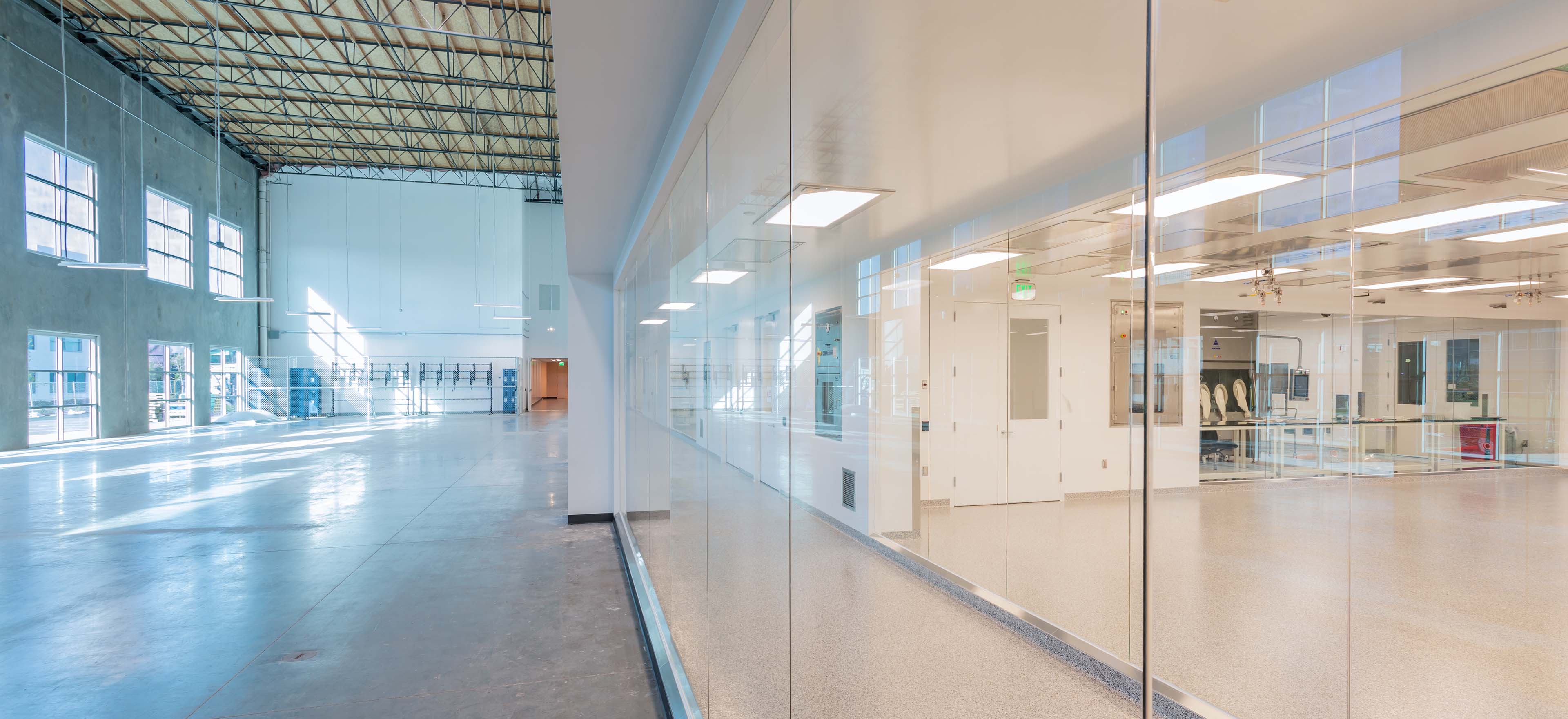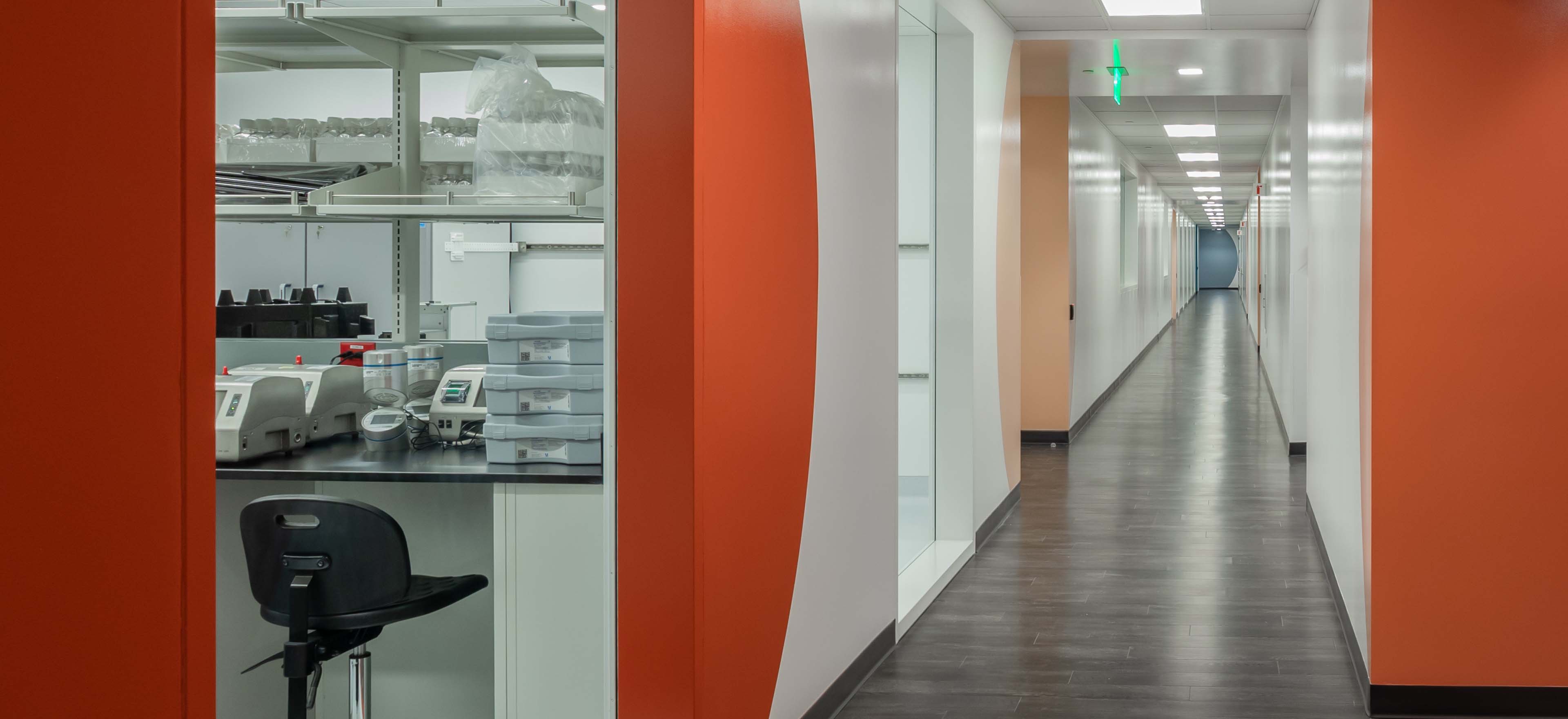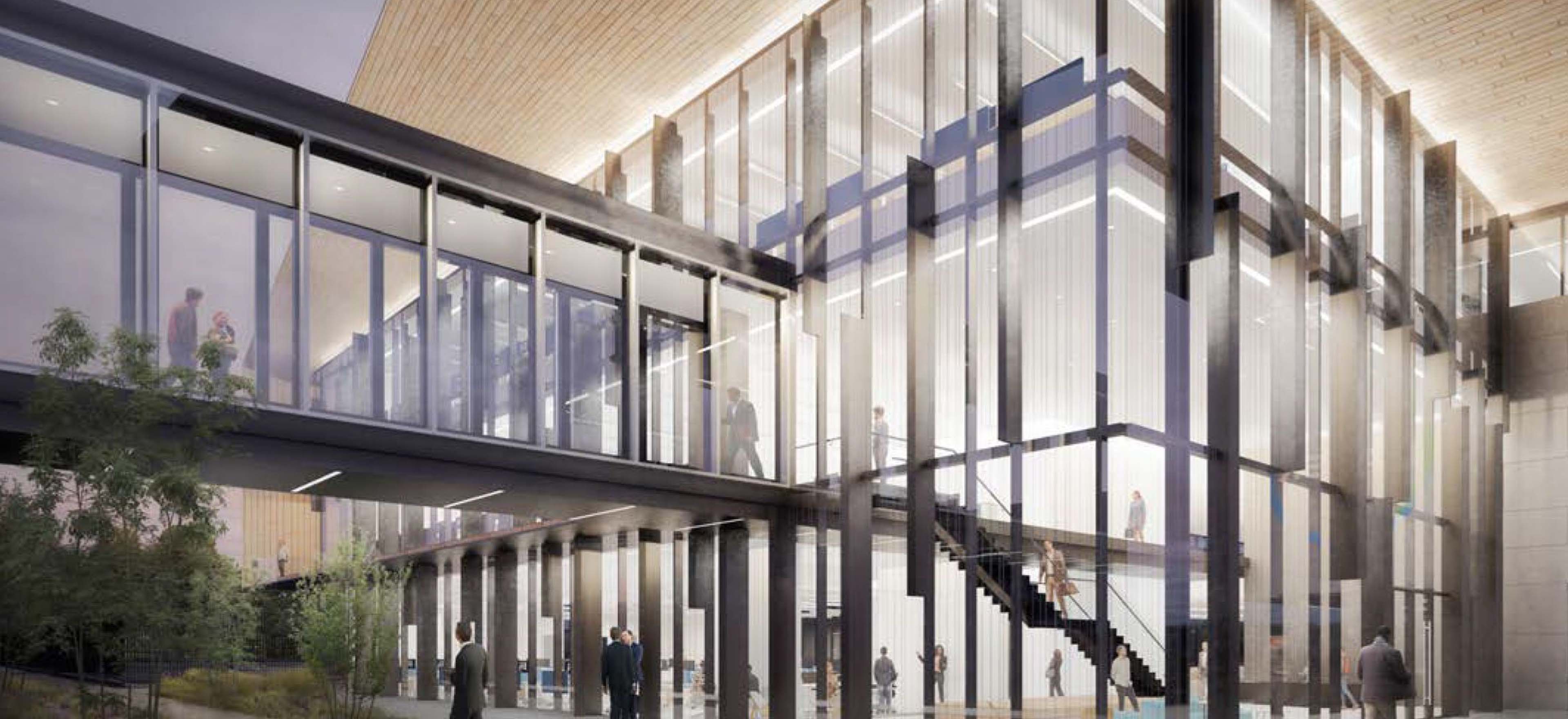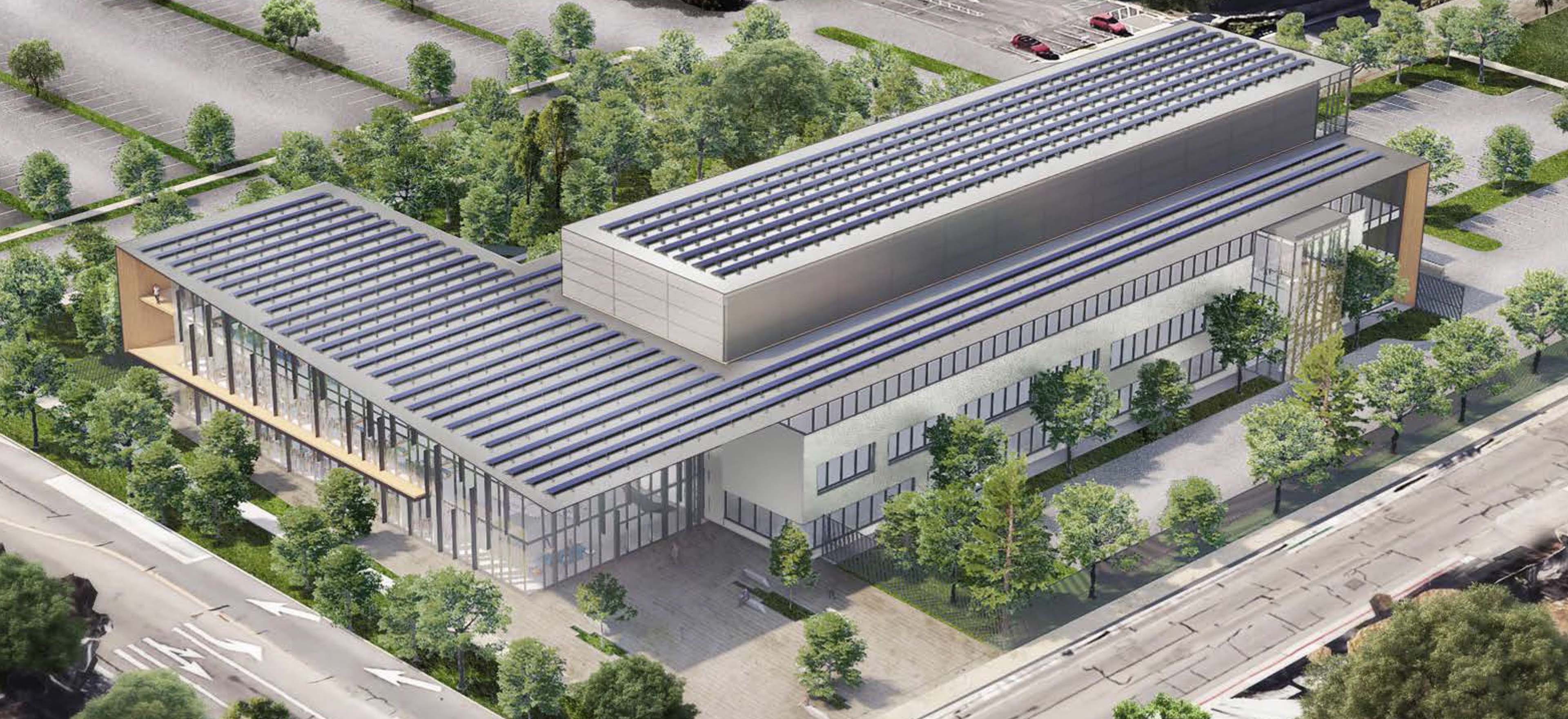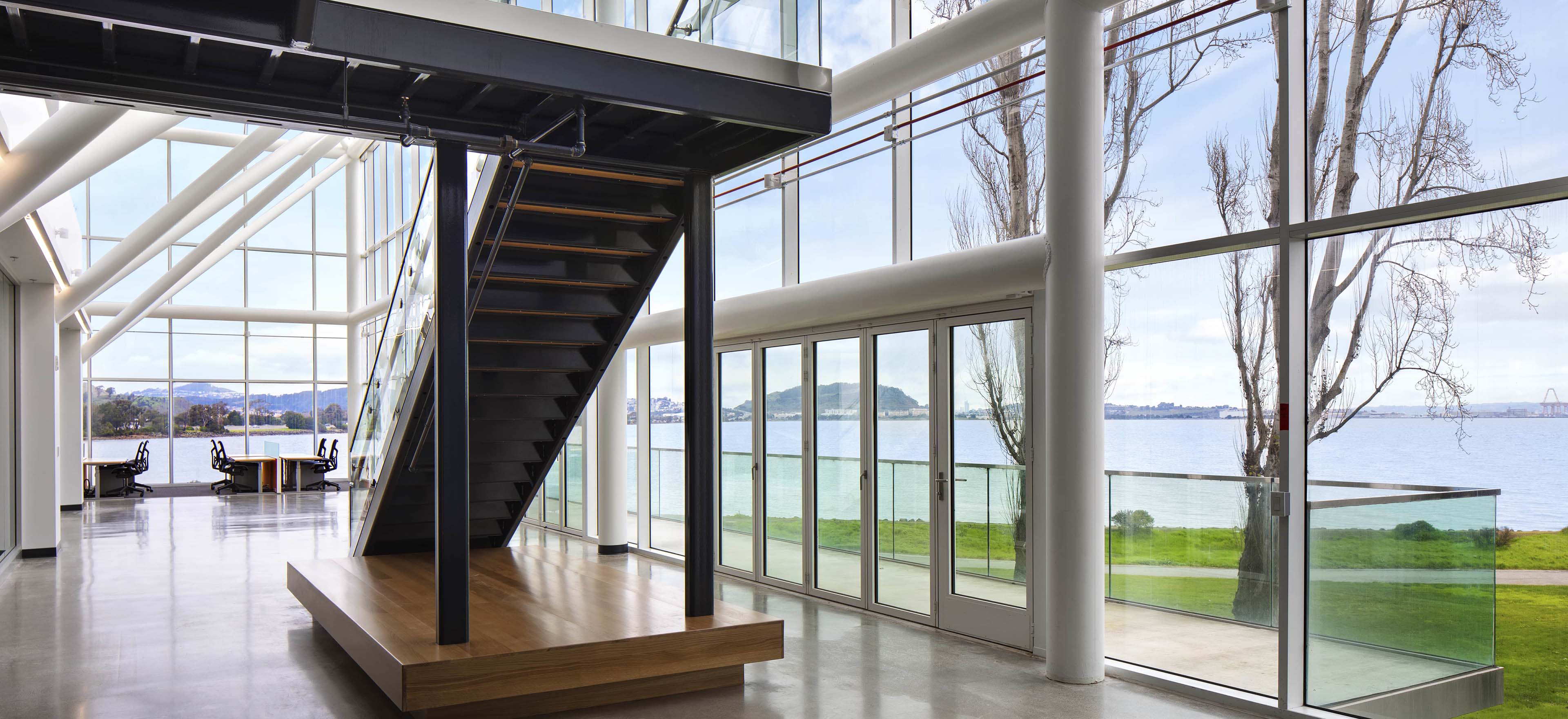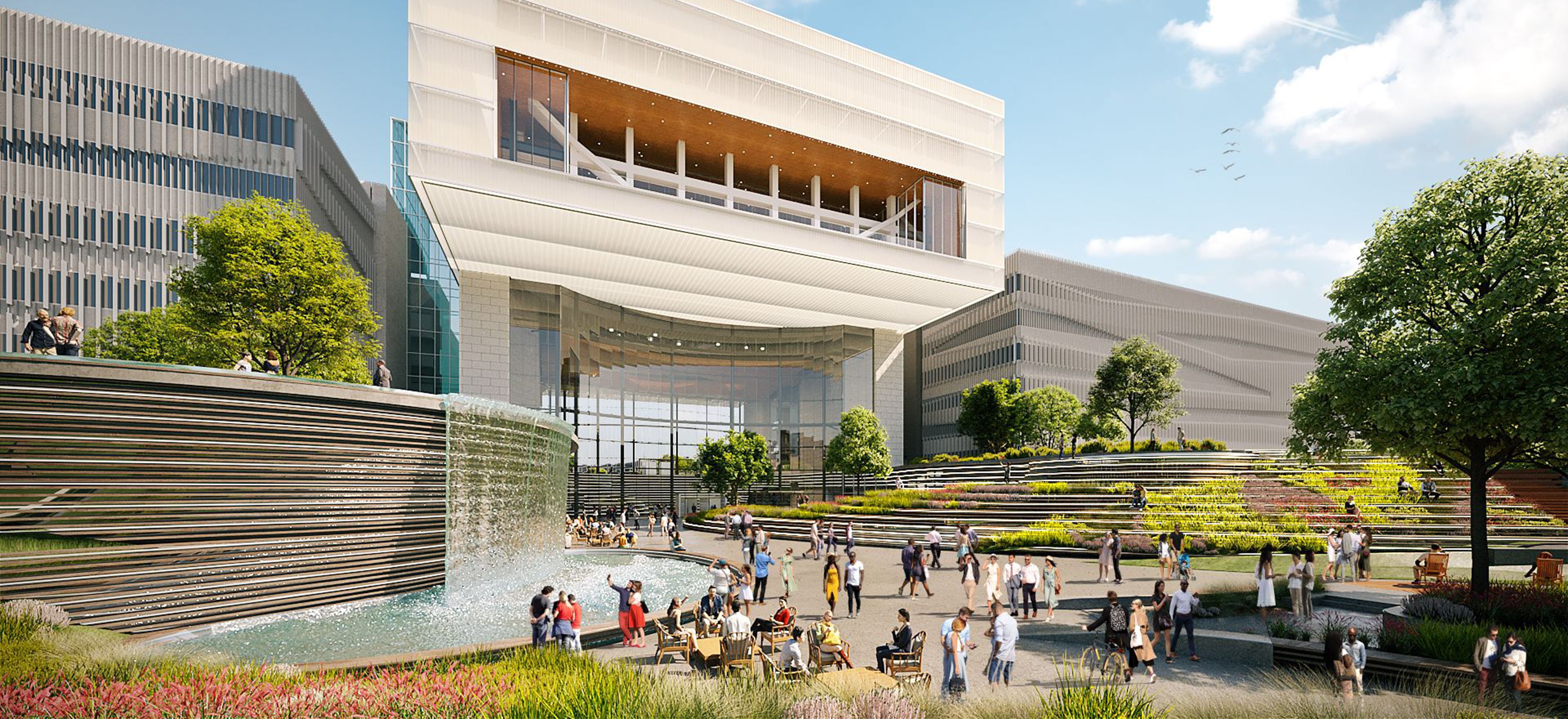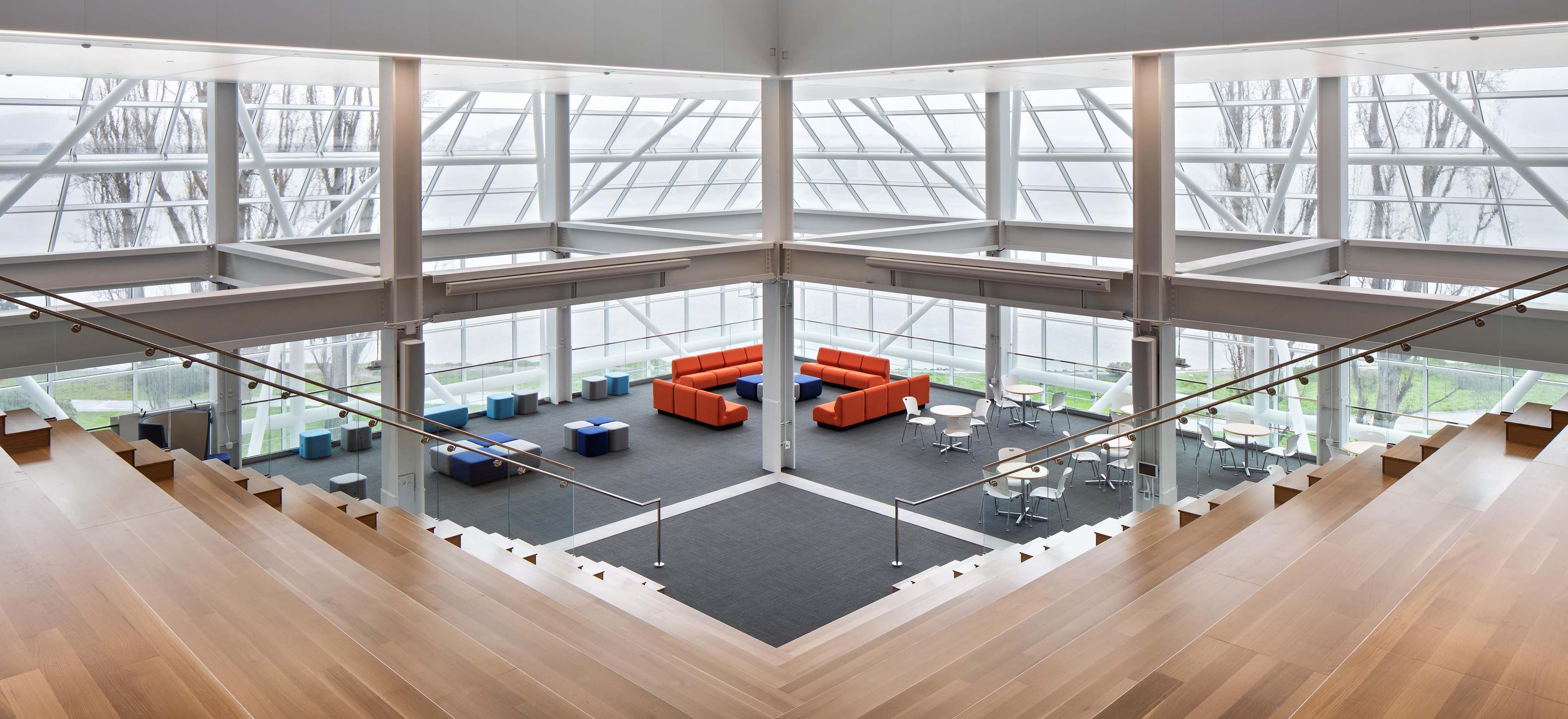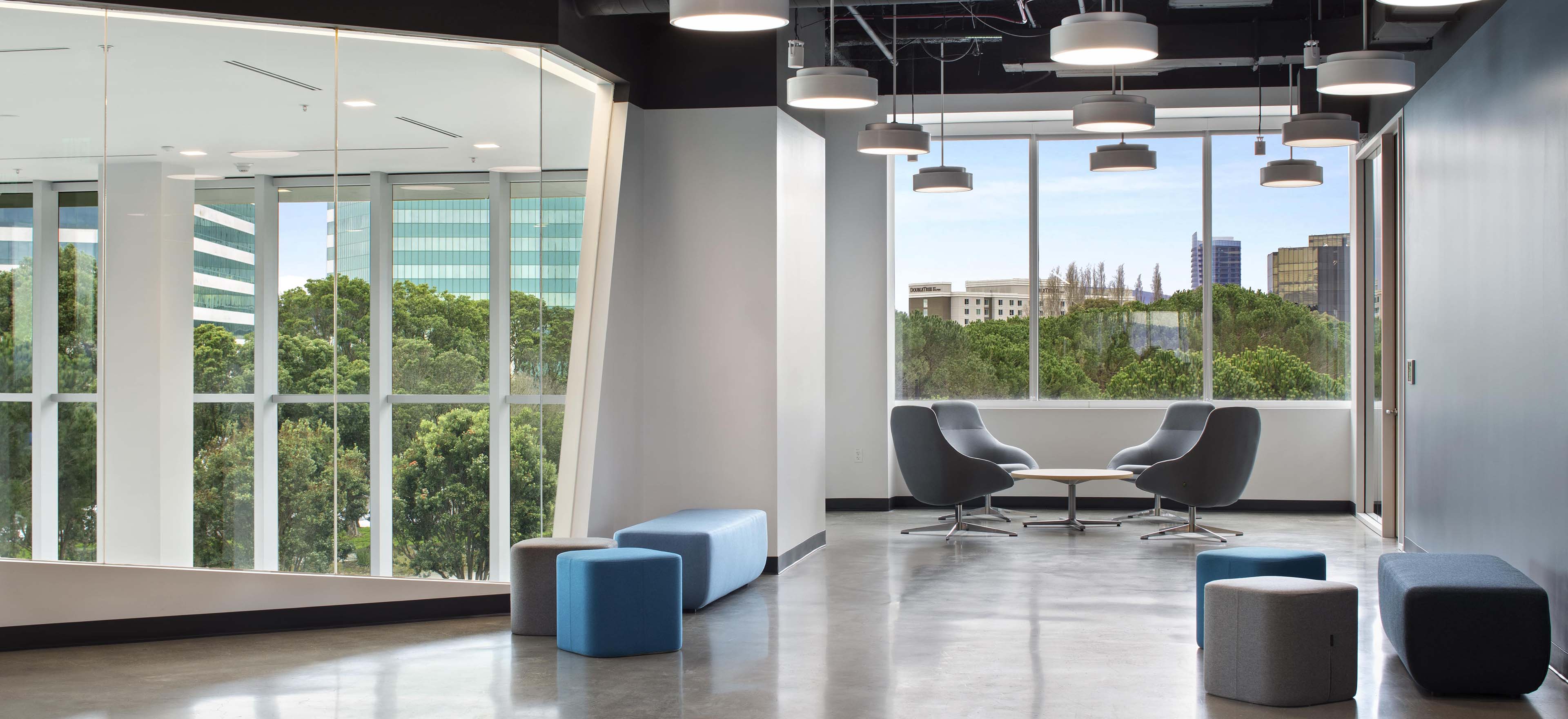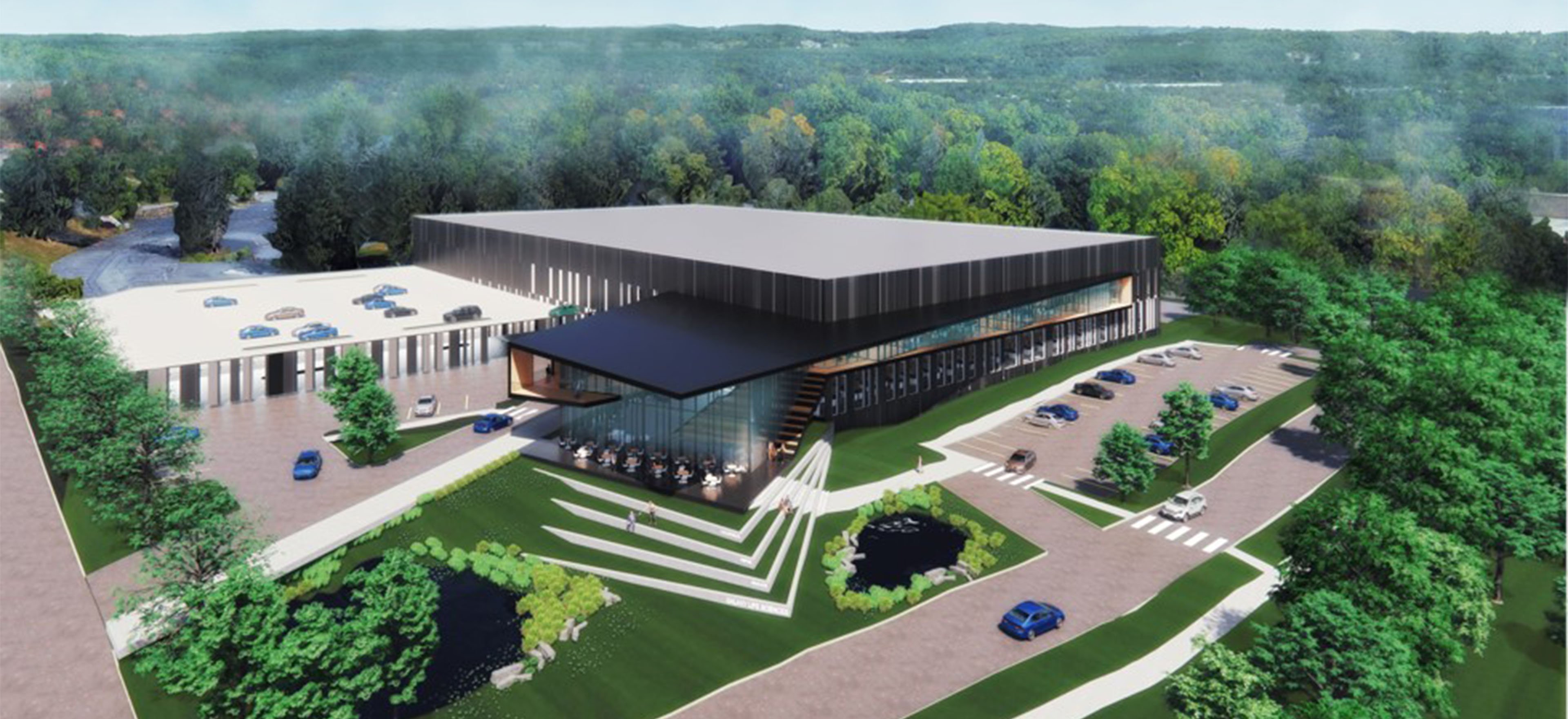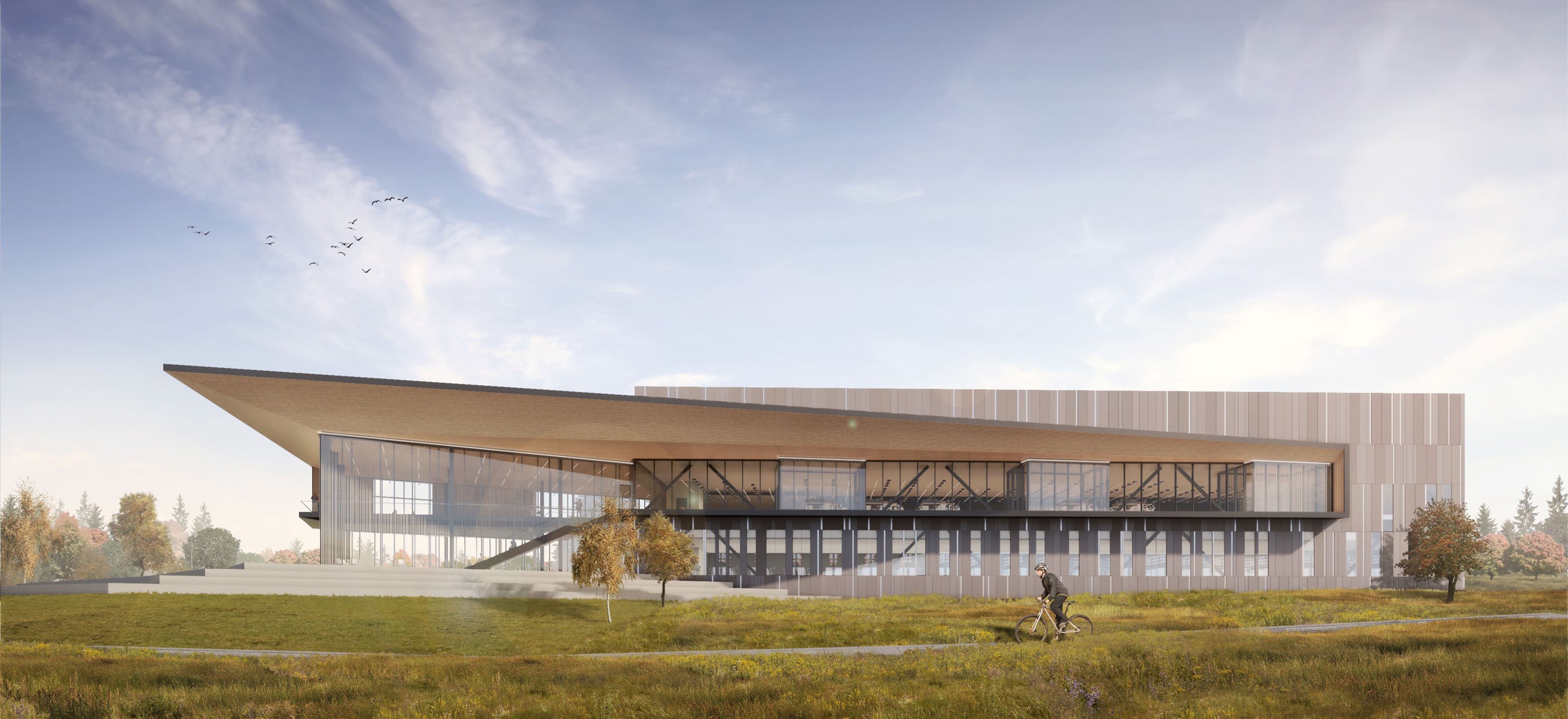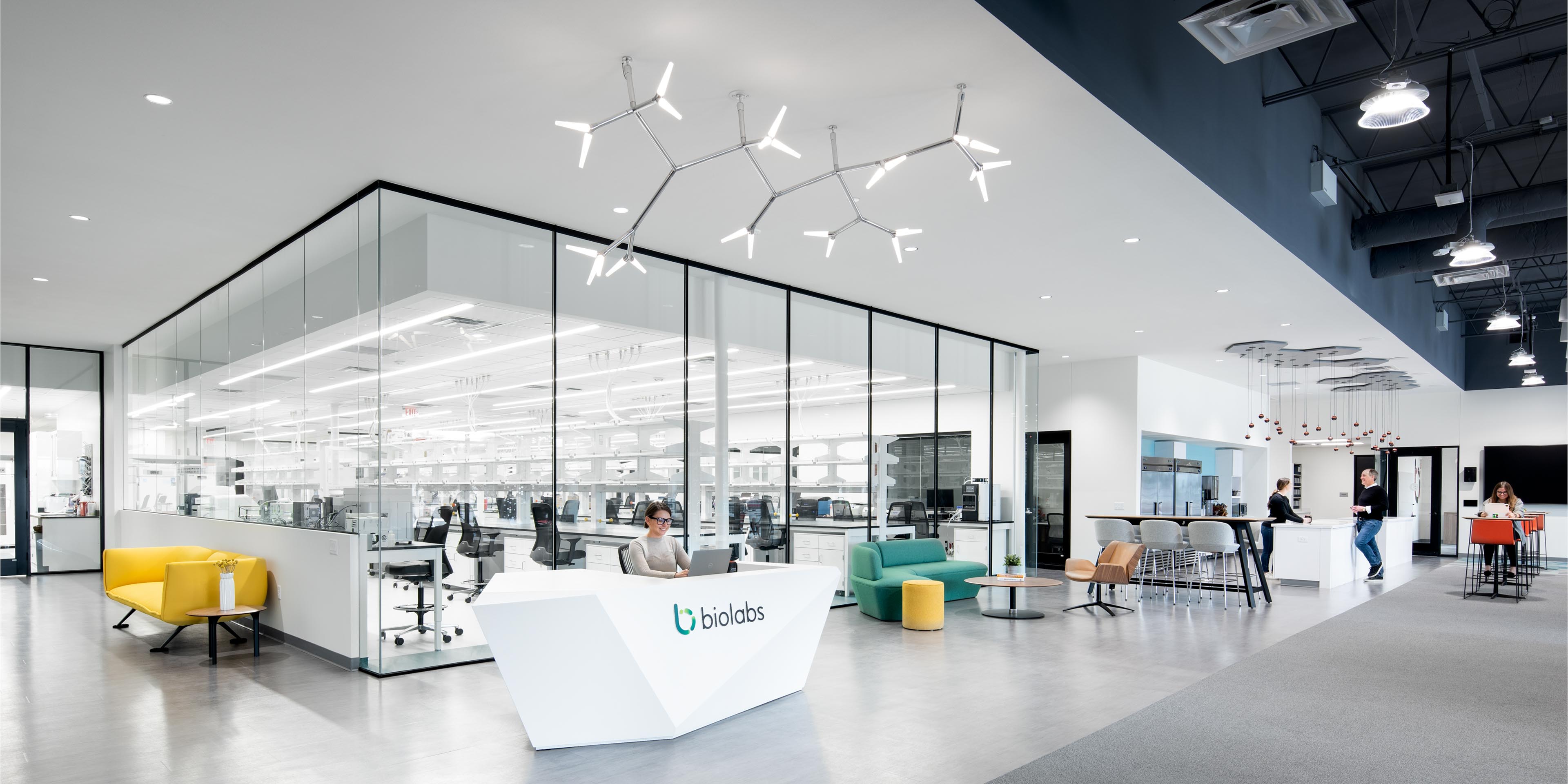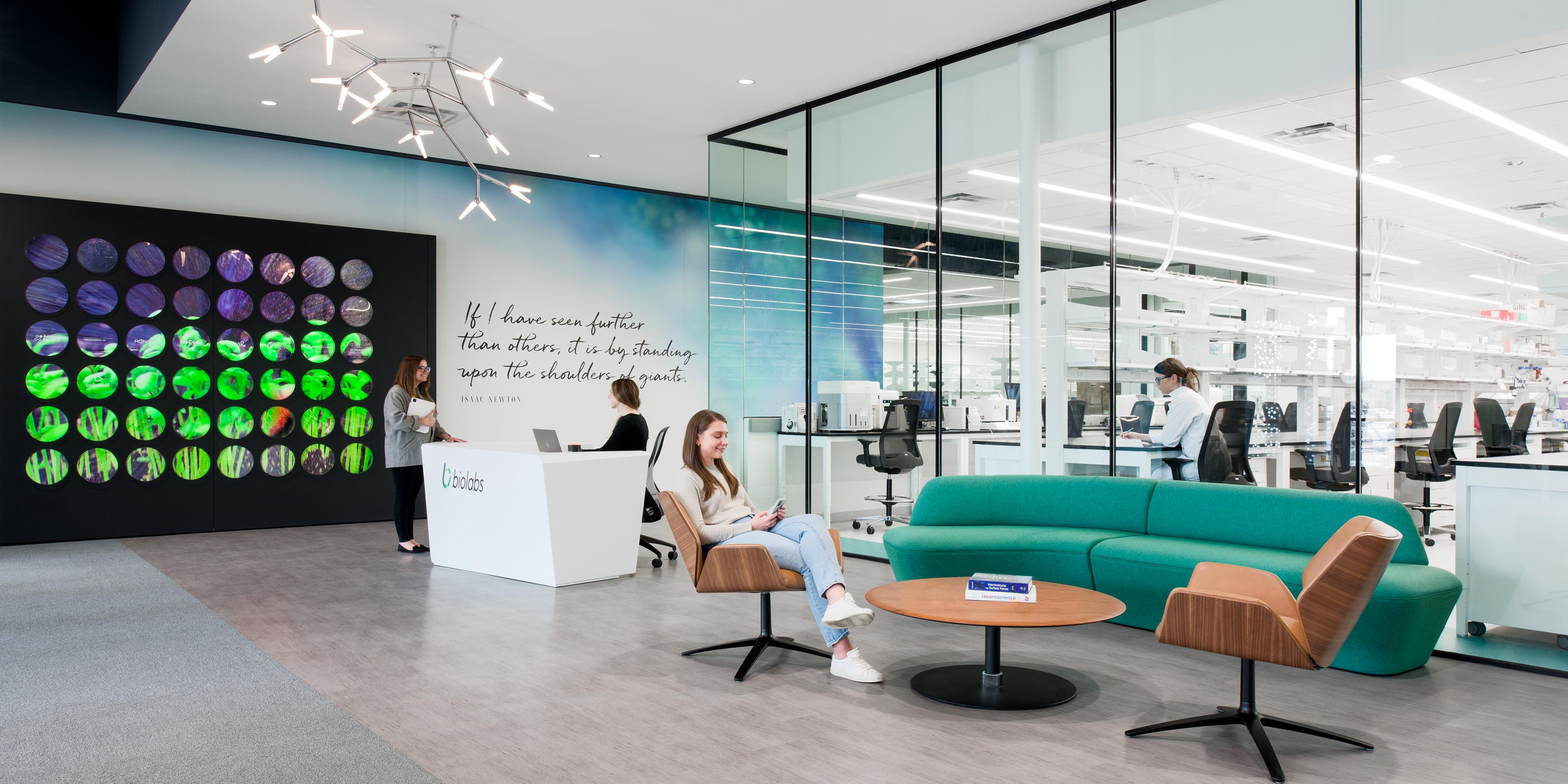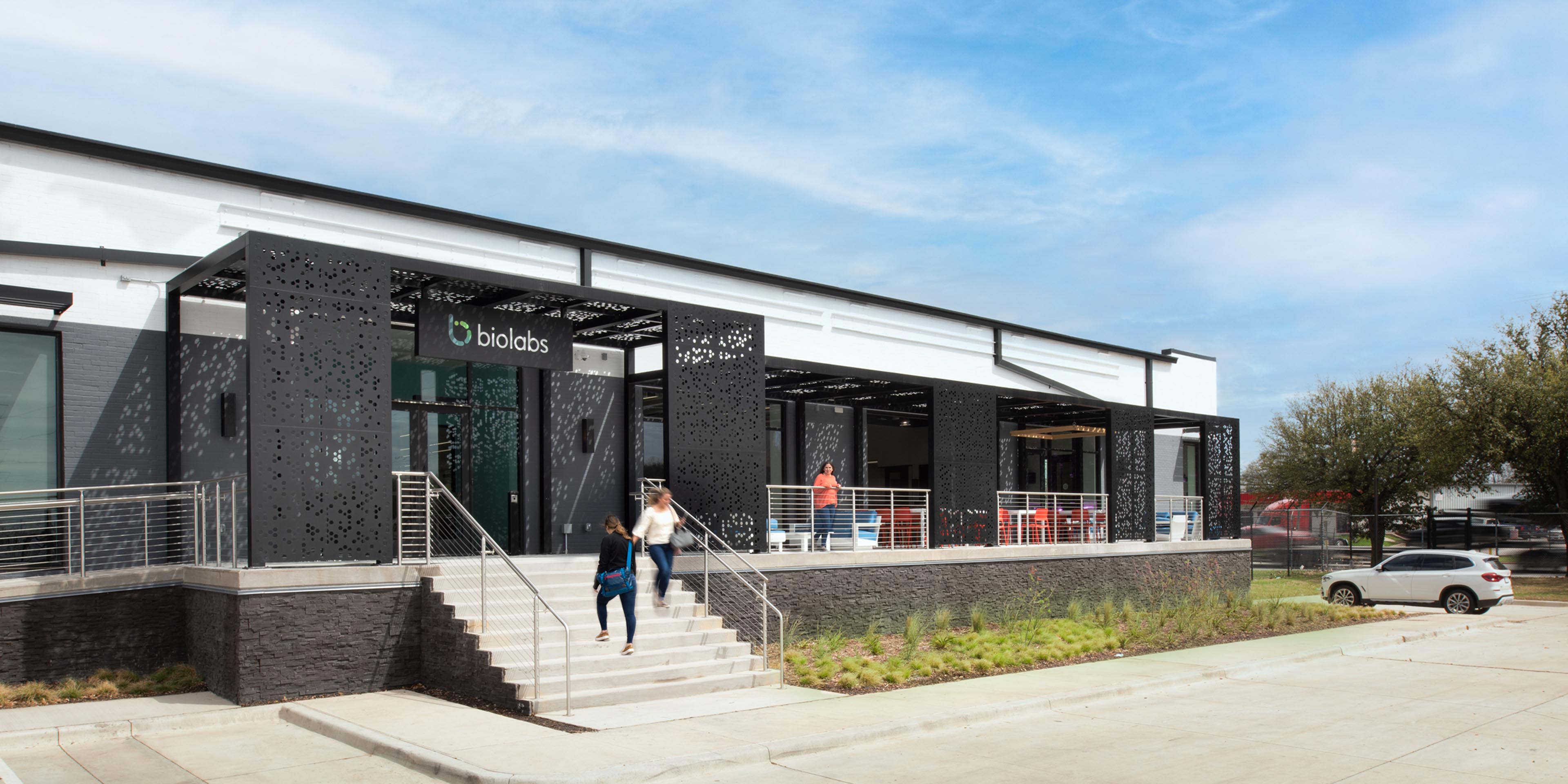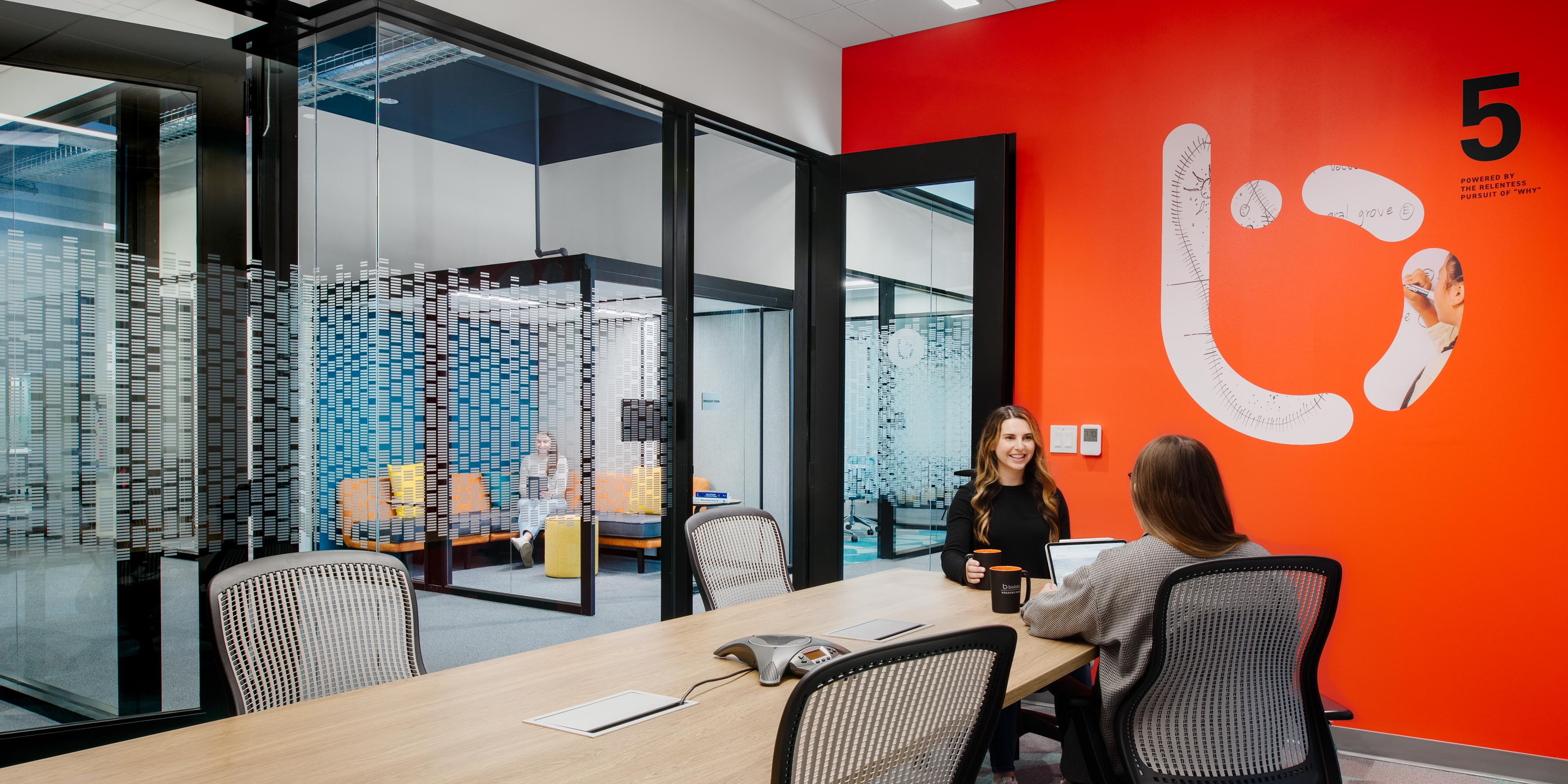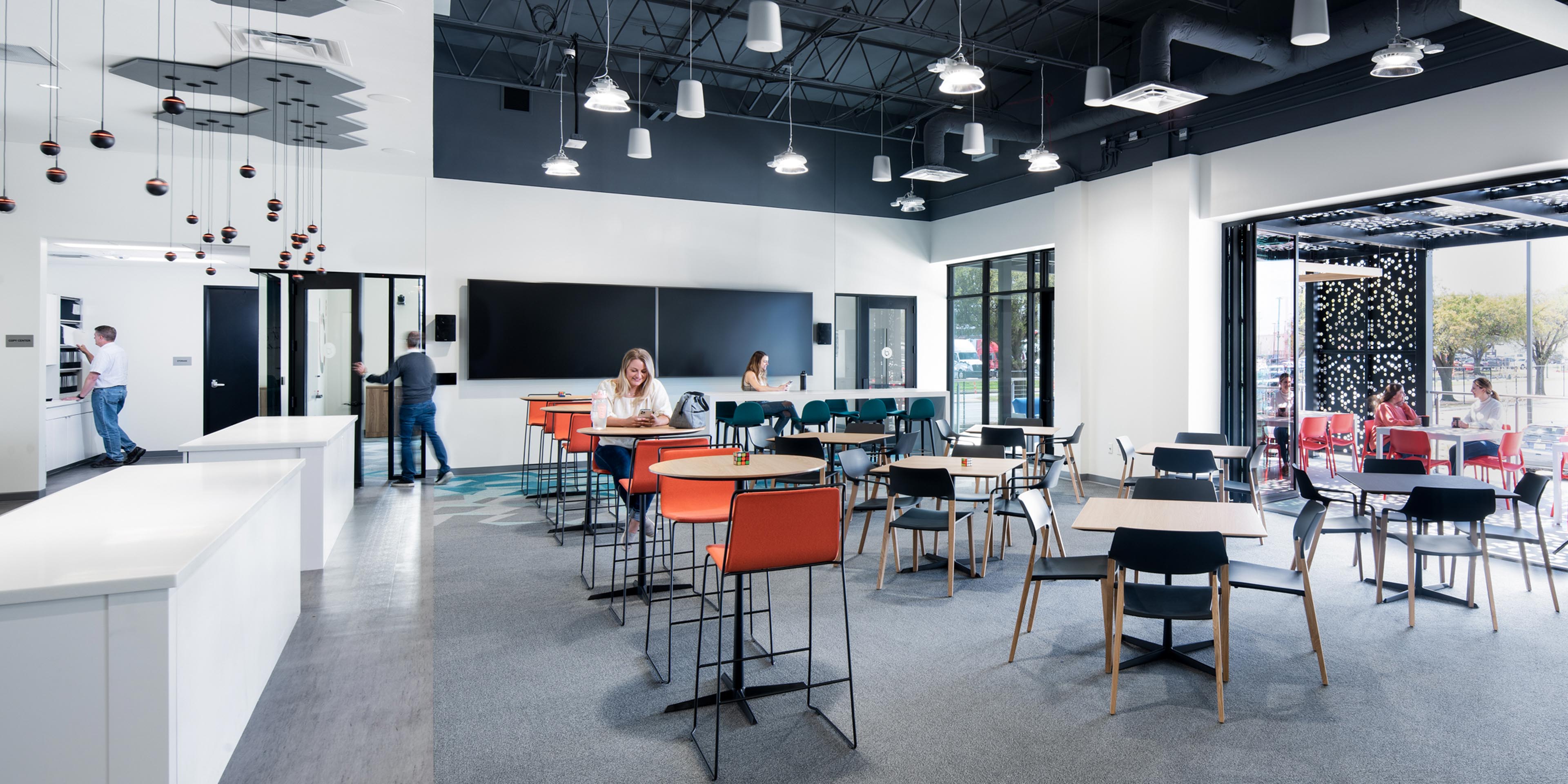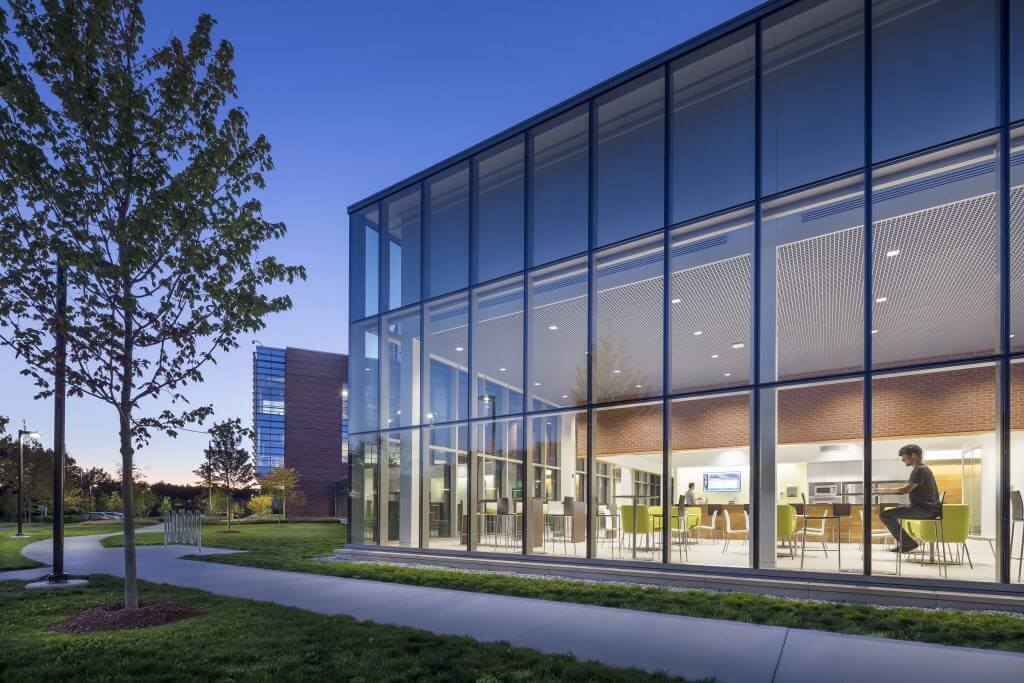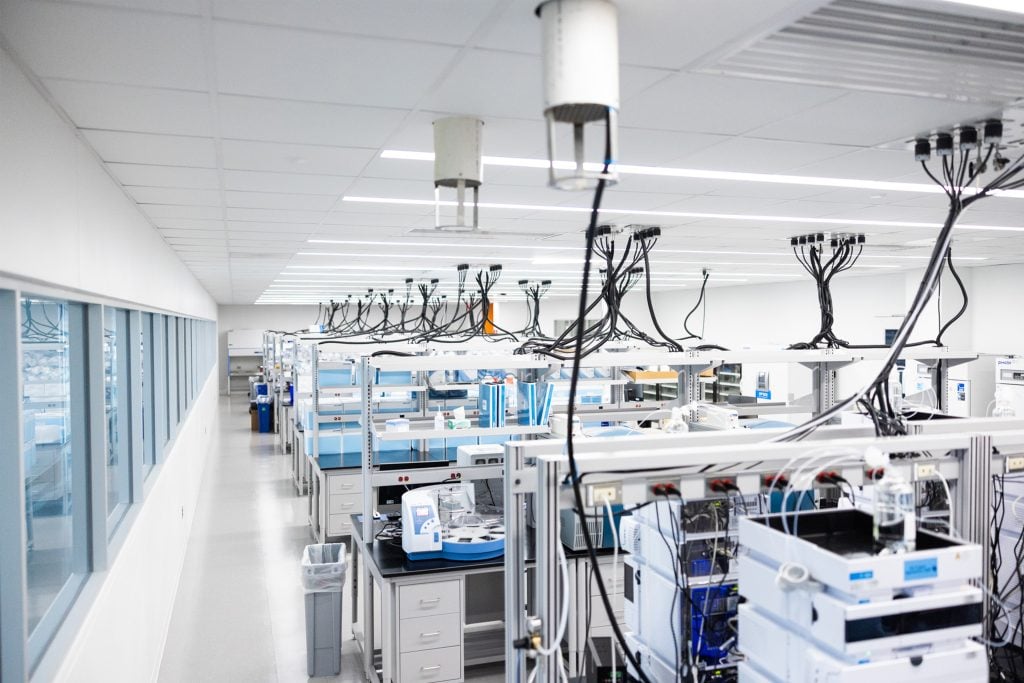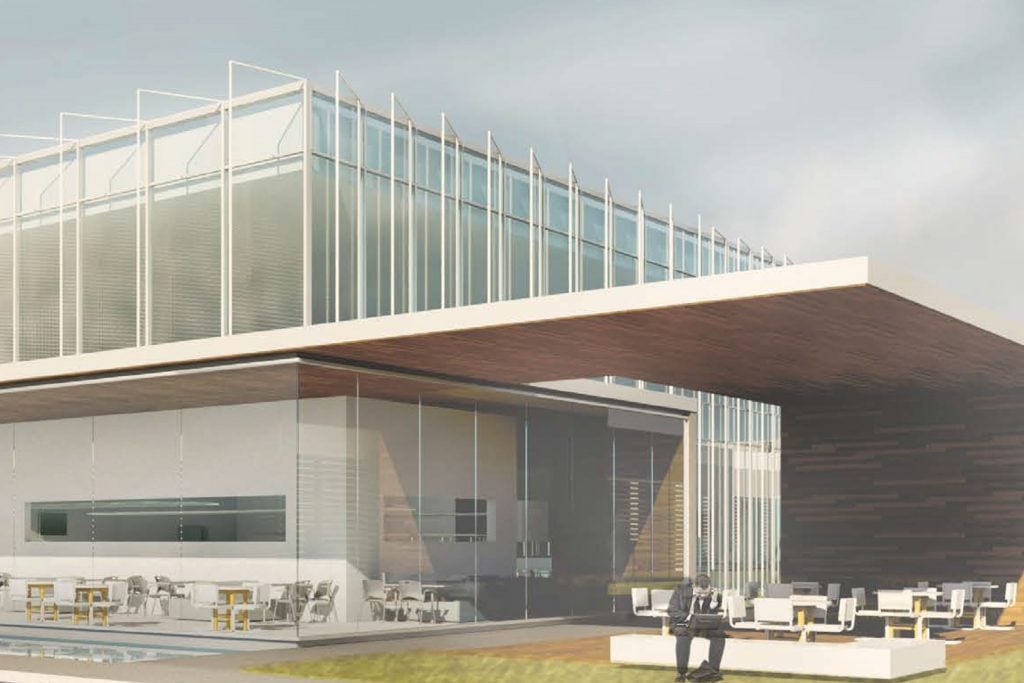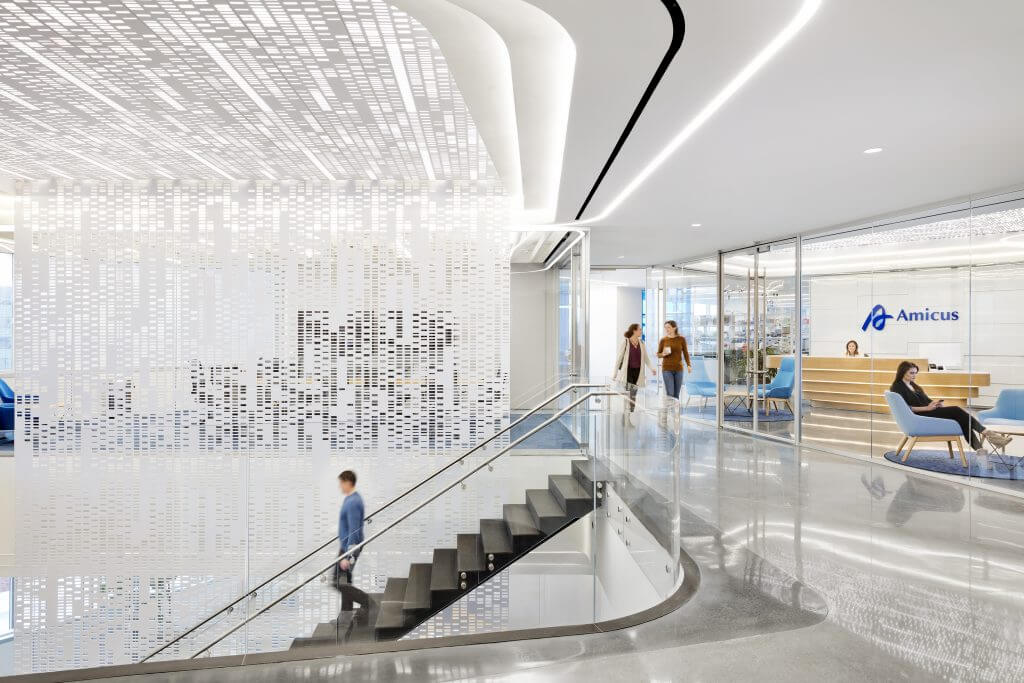Bristol-Myers Squibb
Read More
Contextual design: how life science architects create environments that foster innovation
Architects who envision and develop efficient and innovative life science facilities must specialize not only in the fundamentals of any architecture project—creating a building that is safe, sustainable and aesthetically pleasing—but also in the unique considerations and constraints inherent to an industry on which lives depend.
Inspired Architectural Design
Our architects can help you achieve a balance between technical requirements and captivating, human-centric design.A tiny pill, a slender vial of fluid—the revolutionary drug therapies that patients around the world depend on may seem vanishingly small, but as any life science innovator knows, they are the result of a massive effort involving hundreds of people and some of the world’s most advanced scientific concepts.
For architects, the story can be even more complex: behind every life-saving therapy, there’s a built-for-purpose manufacturing or R&D facility capable of supporting the immensely complex, technically robust process of making a drug that is safe, stable, and effective.
Designing for purpose in life sciences
By designing facilities as mission-driven centers of technical excellence, architects can help life science companies achieve their purpose.
Efficiency
In many industries, speed-to-market is focused solely on revenue generation and market share. In the life sciences, getting therapies to the people who need them is often about life and death. Architects who collaborate with clients must specialize in designing environments that promote lean, efficient cGMP manufacturing spaces without compromising safety.
Innovation
Despite being tightly regulated, life sciences facilities must be designed as fertile spaces for collaboration and discovery, helping scientists engage with their work. Life science architects must therefore blend forward-thinking, innovative ideas while meeting regulatory standards. Doing so ensures clients are prepared for their next opportunity.
Flexibility
As scientific discovery evolves and opportunities for automation and digitalization increase, life science innovators need to know that their facilities can keep pace. Architects must design agile, adaptable facilities that maintain rigorous GMP standards while facilitating rapid changes—all while minimizing operational interruptions and avoiding unnecessary capital expenditure.
The key elements of life science architecture
So how exactly do architects work with life science companies to bring their vision to life? How do they ideally blend the technical with the beautiful to encourage scientific discovery and save lives—all while telling their brand story and attracting top talent? Their focus is primarily on three key elements.
Technical excellence
Architects who specialize in the life sciences need to master two core skills: the design excellence expected of any architect, and the technical expertise uniquely required to develop facilities in which life-saving therapies are discovered and developed.
Life science facilities are high-performing buildings that require a deep understanding of code compliance, performance and regulatory requirements to plan and execute. To do so requires a foundational understanding of project drivers including those related to regulations, equipment, environment, and procedure.
From constructability to code and regulatory compliance, there are endless details requiring scrutiny and expertise in regulated, cGMP manufacturing facilities. Therefore, life science architects must have a vigorous understanding of related disciplines (e.g., process engineering) since they constantly overlap with engineering and construction teams to create a unique project that is both technically robust and experiential.
Safety and efficiency in manufacturing and R&D are key drivers in every project since time in this industry means life and death. With speed to market a primary concern, life science architects create designs centered on efficient development and a streamlined manufacturing process. Above all else, the safety and well-being of a building’s occupants is paramount to its success.
Architects cannot accomplish this work in a vacuum—they engage with related disciplines to create inspiring and technically robust environments to propel medicine forward. When planning a facility, life science architects consider many factors:
- Current and emerging technology
- Personnel headcount
- Amount of product to be produced
- Future growth
- Level of flexibility
- Programmatic adjacencies and flow
- Workplace environment planning
- Storage requirements/warehousing
- Utility infrastructure needs
- Presence of hazardous materials
Client-driven design
At CRB, the passion for our client’s mission is what propels our architectural and interior design teams forward. Every project begins by finding a client’s “why”, which then serves as a North star for the entire project. This means that every design is unique and derived from the specifics of a project’s context—beginning with the individuality of our client. For life science facilities, this means starting with the people a company serves and the lives they impact.
Each project begins with a charrette—sometimes called a visioning session—to define objectives and envision the possibilities. It’s important to have all stakeholders and decision makers at this session; from the company leadership who drives strategic macro decisions to the scientist whose work on the microscopic level propels the company forward. This 360 view is intended to identify opportunities, uncover challenges, and establish core values.
A major focus of the visioning session is to consider experiential aspects of the facility. To do so, architects lead the team as they explore qualitative requirements. Together, they answer questions such as:
What is the corporate culture?
In a time of fierce competition for top talent, companies need to quickly set themselves apart and demonstrate their culture to potential recruits. Architects and their interior design partners collaborate with clients to identify concepts that reflect the company’s core values—such as highly efficient workspaces and inspiring environments that encourage the sharing of ideas. Client-driven design reinforces a culture of innovation through architecture.
Aligning with the client’s mission to revolutionize medicine production, architects designed this CDMO facility to be both flexible and adaptable to serve partners of all sizes.
Is the facility intended to be a flagship building?
Flagship facilities can be a symbol that represents new biotechnologies and innovation for many companies. Therefore, architects want to use the building to both reflect and enhance the brand. Client-driven design can reinforce a company’s existing branding or transform their identity as they embark on new initiatives and scientific discoveries.
What types of technology will the facility include?
When designing a building, life science architects have an opportunity to celebrate a client’s specific process and technology. Putting the science on display allows clients to showcase their ingenuity, intent and direction. For example, they may design a space that speaks to the uniqueness of their technologies. Rather than concealing highly technical spaces, employees and visitors are offered a figurative and literal window into the work.
Display windows into manufacturing areas offer daylight deeper into the building, more visibility to employees and visitors, and increase excitement about the research or manufacturing happening in the space.
What target emotions is the space meant to evoke for visitors?
In life science facilities, design can offer ways to learn about the unique, life-changing stories from patients and their families. Through interactive displays, patient photos or quotes, implementing storytelling can elicit emotion for employees and visitors. The use of color, light, materials and textures establishes expectations of what the building and space is intended for and can emotionally impact the user feeling welcomed, inspired, focused and excited about the work they undertake.
What existing branding does the company use?
Facilities can serve as a canvas for architects to infuse brand elements into their designs. By utilizing color, art installations, murals and textures, these spaces can beautifully narrate the rich history of a company.
Sustainability and employee wellness
At the core of every life science client’s mission is improving lives. They expect their operations, buildings and environments to reflect this mission, in both qualitative and quantitative measures. As our clients increasingly prioritize their people and our planet, architects are ready to deliver buildings to support them.
Sustainable architecture requires an intentional approach. Rather than an afterthought, it must be incorporated from the beginning of the design process. Healthy buildings encompass many things, including energy efficiency, responsible resource management, and employee wellness.
One of the tools architects and interior designers use to guide sustainability is the Leadership in Energy and Environmental Design (LEED) rating system. LEED offers a framework for architects and interior designers to use to create healthy and efficient buildings that reduce carbon and long-term energy costs. LEED certification is a globally recognized symbol of sustainability and environmental stewardship. It takes every part of the facility design into consideration, including:
- Reducing contribution to global climate change
- Enhancing individual human health
- Protecting and restoring water resources
- Protecting and enhancing biodiversity and natural ecosystem
- Promoting sustainable and regenerative material cycles
- Enhancing quality of life in the community
Gone are the days of inefficient buildings with few windows and scientists laboring in obscurity in the basement. Life science facility owners recognize the connection between the health and wellness of their personnel and the success of their operations. Life science architects will therefore consider a facility’s process requirements and the needs of the building occupants. Architects can design spaces that support physical health and encourage emotional engagement.
To do so, they leverage resources and guidance from the International WELL Building Institute (IWBI), which is a public benefit corporation whose mission is “to improve human health and well-being in buildings and communities across the world through its WELL Building Standard (WELL).” In short, WELL buildings support employee wellness. The right design enhances the employee experience.
7 ways life science architects support employee wellness
Life science companies aren’t just interested in advancing human health—they’re also interested in healthy buildings.
Optimizing indoor air quality includes the prevention, purification, and removal of airborne contaminants. For example, UV filters in air handlers may be used.
Optimizing water quality includes the removal of contaminants through filtration and treatment. Supporting wellness also means offering accessible water stations for employees.
Communal café spaces encourage employees to leave their office for mealtimes. Eating with others can prompt healthier food choices.
Access to natural light can improve energy, mood, and productivity. In an industry that has traditionally focused on process design to the detriment of a comfortable work environment, it’s refreshing to note that 75% have incorporated daylighting technology into the workplace.
Communicating staircases encourage dynamic movement through spaces. In fact, 44% of life sciences facilities are placing fitness facilities onsite or reimbursing employees’ gym memberships. Just over half now offer open space like walking or biking paths onsite.
Designs that increase natural light and provide sound mitigation can increase employee comfort and decrease unnecessary stress. Another way to support a positive employee experience is by offering a range of spaces appropriate for different activities. These may include private, collaborative, focused, and interactive spaces.
Access to art and nature indoors supports wellness and creativity.
Environmental considerations that guide contextual design for life science facilities
Contextual design has made a comeback in recent years. It requires architects to reflect on the natural and built environment of a building and design with these in mind. Life science architects start with the big picture of a building’s surroundings and then gradually zoom in. This macro-to-micro approach allows them to build a complete ecosystem within a building or campus.
The natural environment that surrounds a life science facility
Climatic conditions
In contextual design, architects consider the natural environment a building will be nested within to create comfortable buildings. Beyond creating satisfying connections with the natural environment, designing with climatic conditions in mind creates more efficient spaces. For example, they can factor in prevailing wind conditions, demand for cooling versus heating, and solar heat and glare.
Solar orientation
Architects consider the possible positioning of a building to enhance natural light. Siting buildings carefully to maximize daylight can improve team members’ moods, circadian health, and overall productivity. Exterior walls can be constructed to maximize natural views and daylight while minimizing direct sunlight to reduce cooling loads and unwanted glare.
Orienting the building so people occupied space is predominantly on north and south facades, where we can maximize indirect natural light by simple horizontal shading elements, allows us to create a serene and inviting atmosphere. East and west facades have low angle and more dynamic sun conditions that can utilize sun shading or more complex electrochromic glazing, which automatically adjusts the amount of light entering the space. Meanwhile, daylight harvesting systems intelligently supplement electric lighting with natural light, maintaining a harmonious balance between functionality and sustainability.
Access to natural light can improve energy, mood, and productivity. In an industry that has traditionally focused on process design to the detriment of a comfortable work environment, it’s refreshing to note that 75% have incorporated daylighting technology into the workplace.
Topography
A building’s surrounding topography—even if it appears challenging —can be an opportunity to enhance the building both expressively and functionally. Responding with sensitivity to challenging geography or an undulating landscape can offer architects new and exciting design opportunities that a flat piece of land just doesn’t offer. Utilizing grade changes on certain projects can optimize material movement by having incoming materials on one floor and outgoing on another, allowing gravity to assist with material movement within the building.
Vegetated landscapes
Architects can leverage existing biophilia to enhance the design and the user experience of a new building. By framing both the visual and physical connections to the surrounding landscapes, a design can connect building users to their surroundings.
Inspired by the natural environment, architects designed an innovative biomanufacturing campus that pays homage to the thriving ecosystem it’s surrounded by.
The built environment that surrounds a life science facility
Buildings
Contextual design includes the ability to take cues from the environment surrounding a new facility, even if nearby buildings are distinctly different. For example, architects can honor the character of surrounding historic buildings by utilizing similar design cues, materials or proportions.
Pathways and roadways
Before designing a new life science building, architects reflect on the passages that lead to and from the surrounding environment. They take transportation, safety, and appearance into consideration.
Attractions
Surrounding parks, landmarks, and urban spaces are all studied when designing a new life science building. Incorporating purposeful views of and access to these attractions can reflect the liveliness of a company’s culture.
Designing for the future of life sciences
Breakthroughs in scientific research are transforming the field of medicine with astonishing speed. Just as life-saving therapies have progressed rapidly in the last decade, the spaces where this work takes place have also evolved. As the life science industry matures and pushes the boundaries of research, development, and manufacturing, companies require nimble buildings that are both functional and beautiful.
Together with our clients, CRB’s architects and interior designers achieve a balance between complex technical requirements and inspirational, human-focused design. Every project requires a blend of expertise and design to create inspiring and technically robust environments to propel teams forward.
Life science architects bring a client’s vision to life by capturing their passion, vision, and culture. They can bring form and function together in an efficient, useful, and beautiful space. Through architecture, life science companies are able to advance their business case, communicate a clear vision, and motivate their people in an environment that encourages productivity and stimulates creativity.
At CRB, our projects and designs strive to efficiently support the development of innovative therapies and novel products that are rooted in the purpose of bettering people’s lives.

Interior design for life sciences environmentsWhere science, creativity, and business are seamless.
Read More
Where science, creativity, and business are seamless.
Read More

